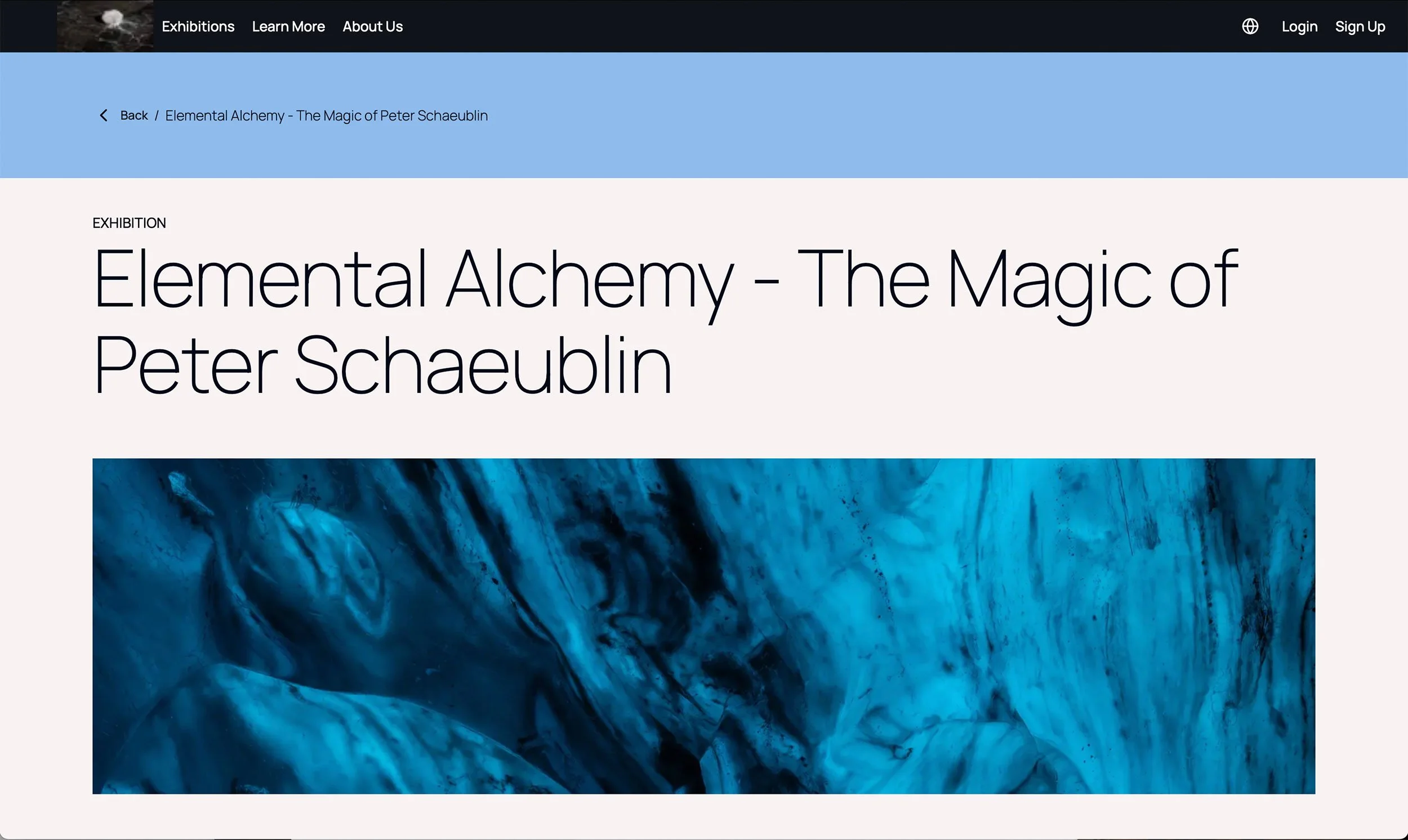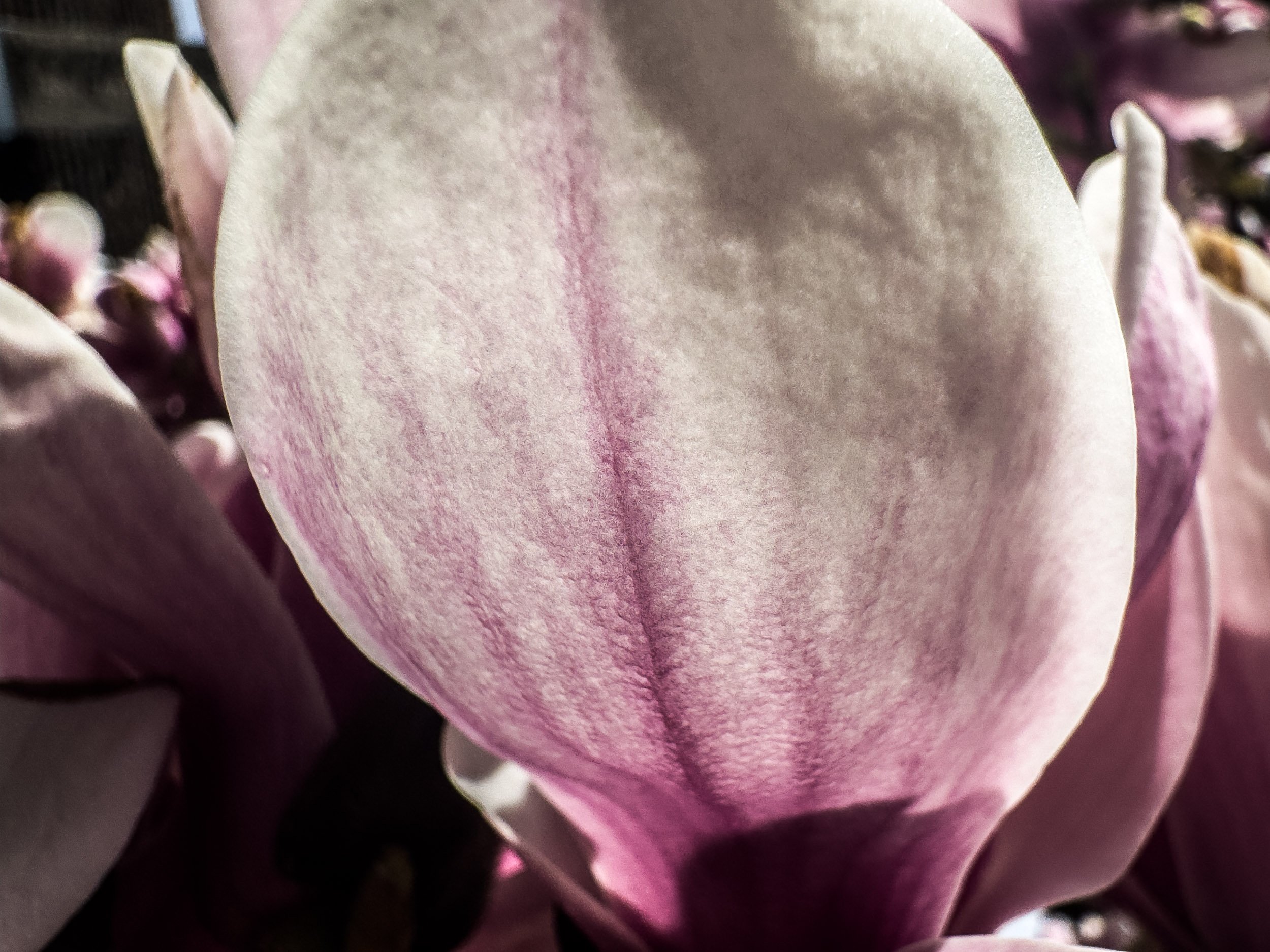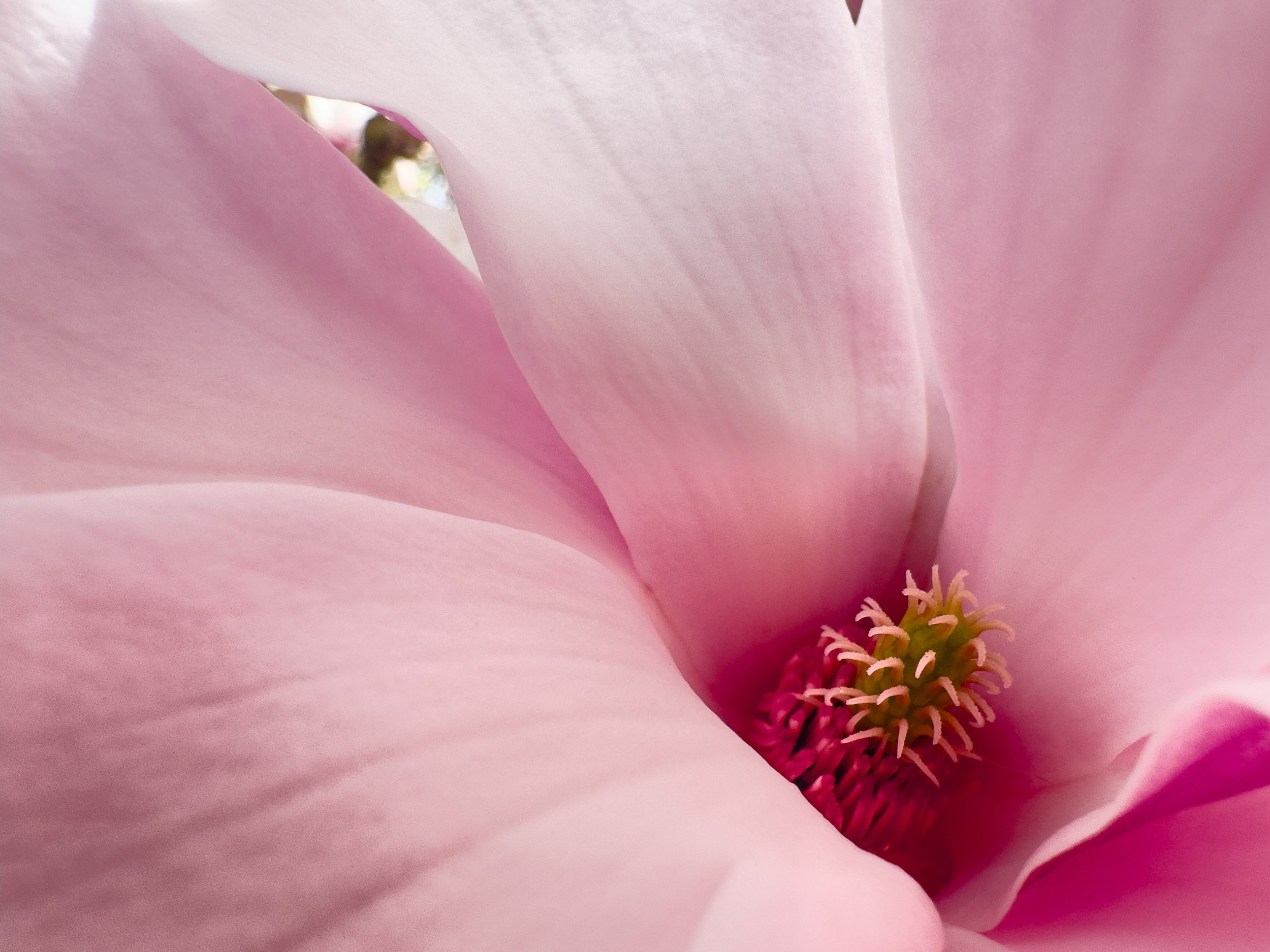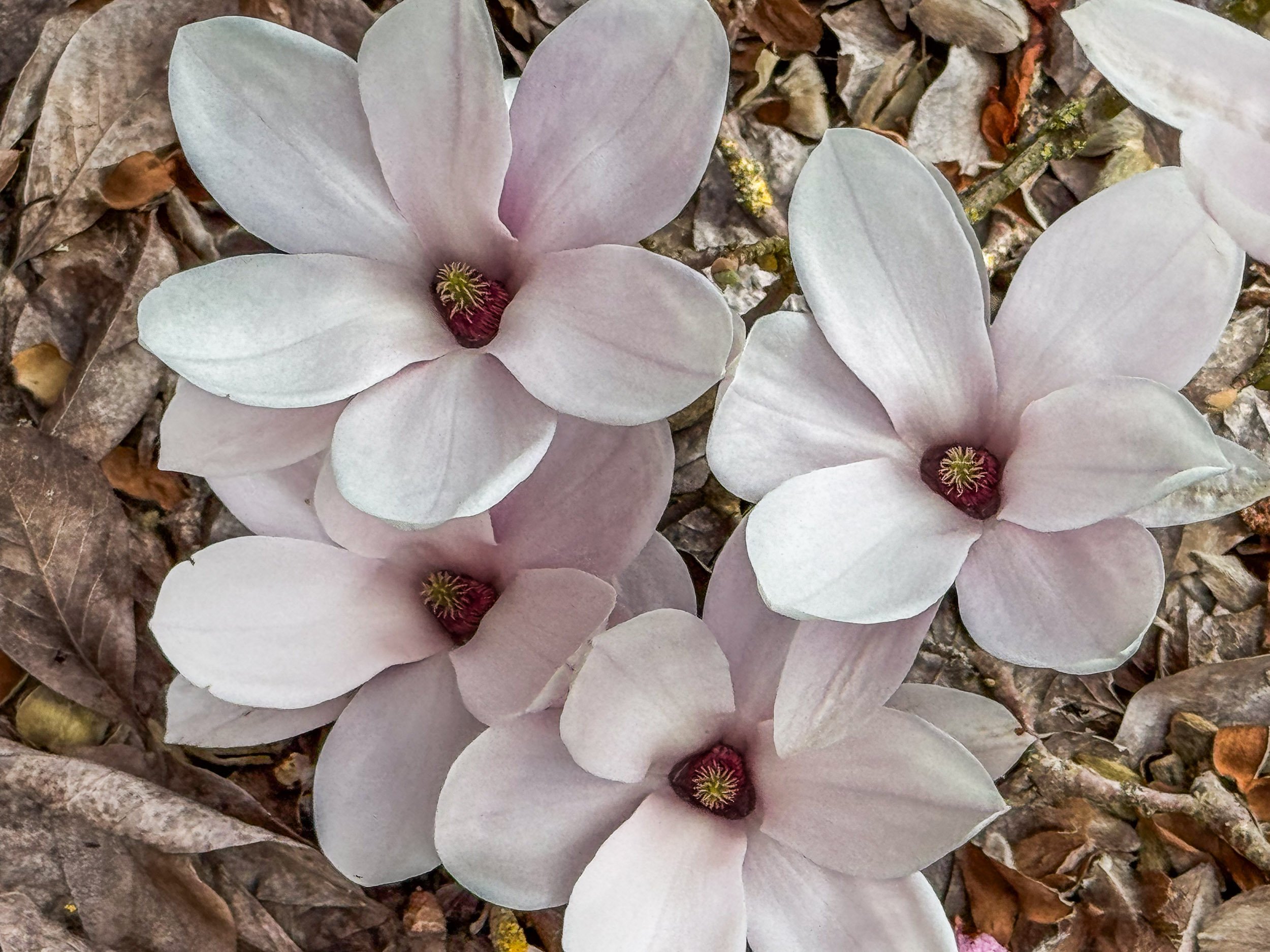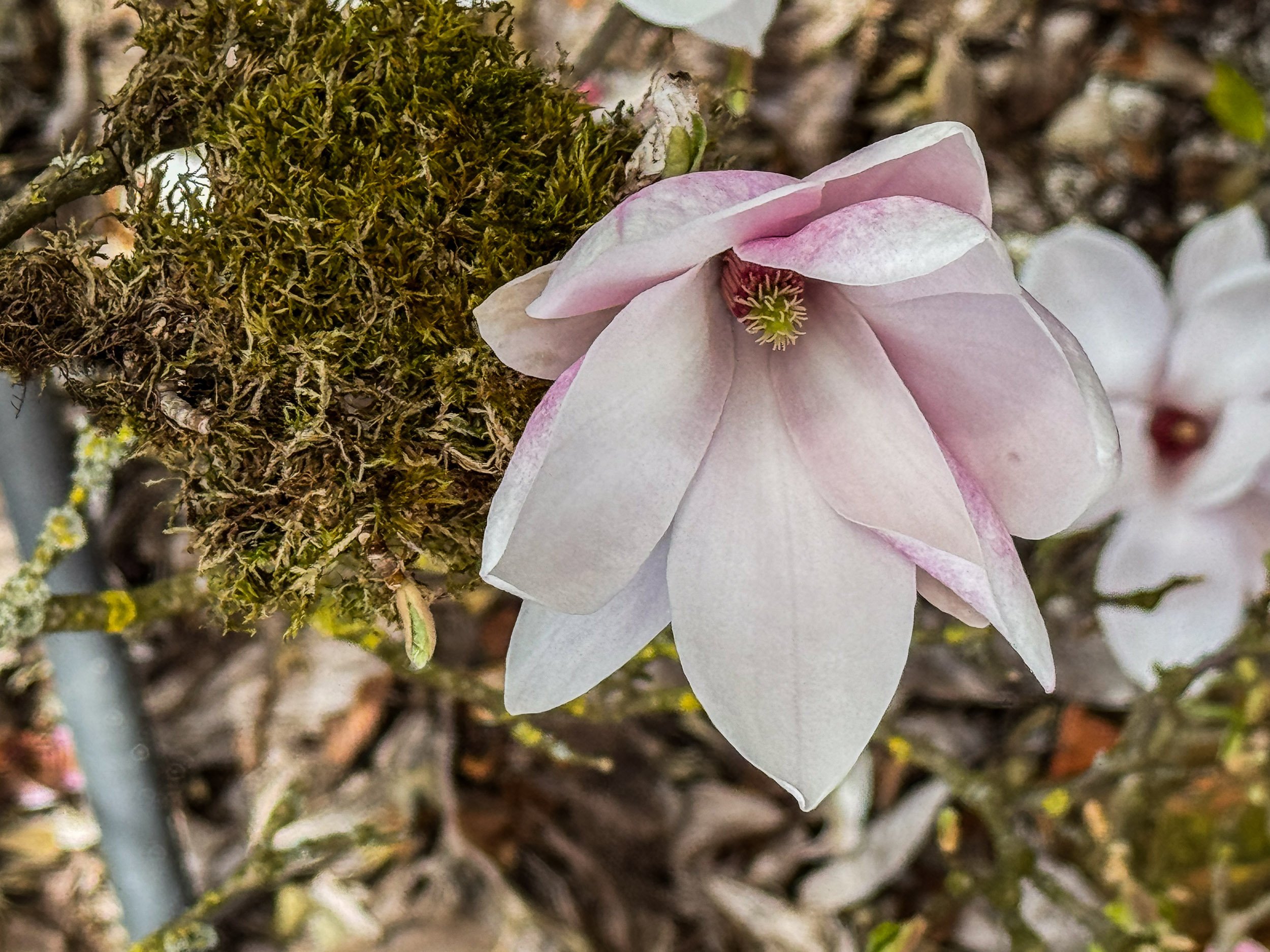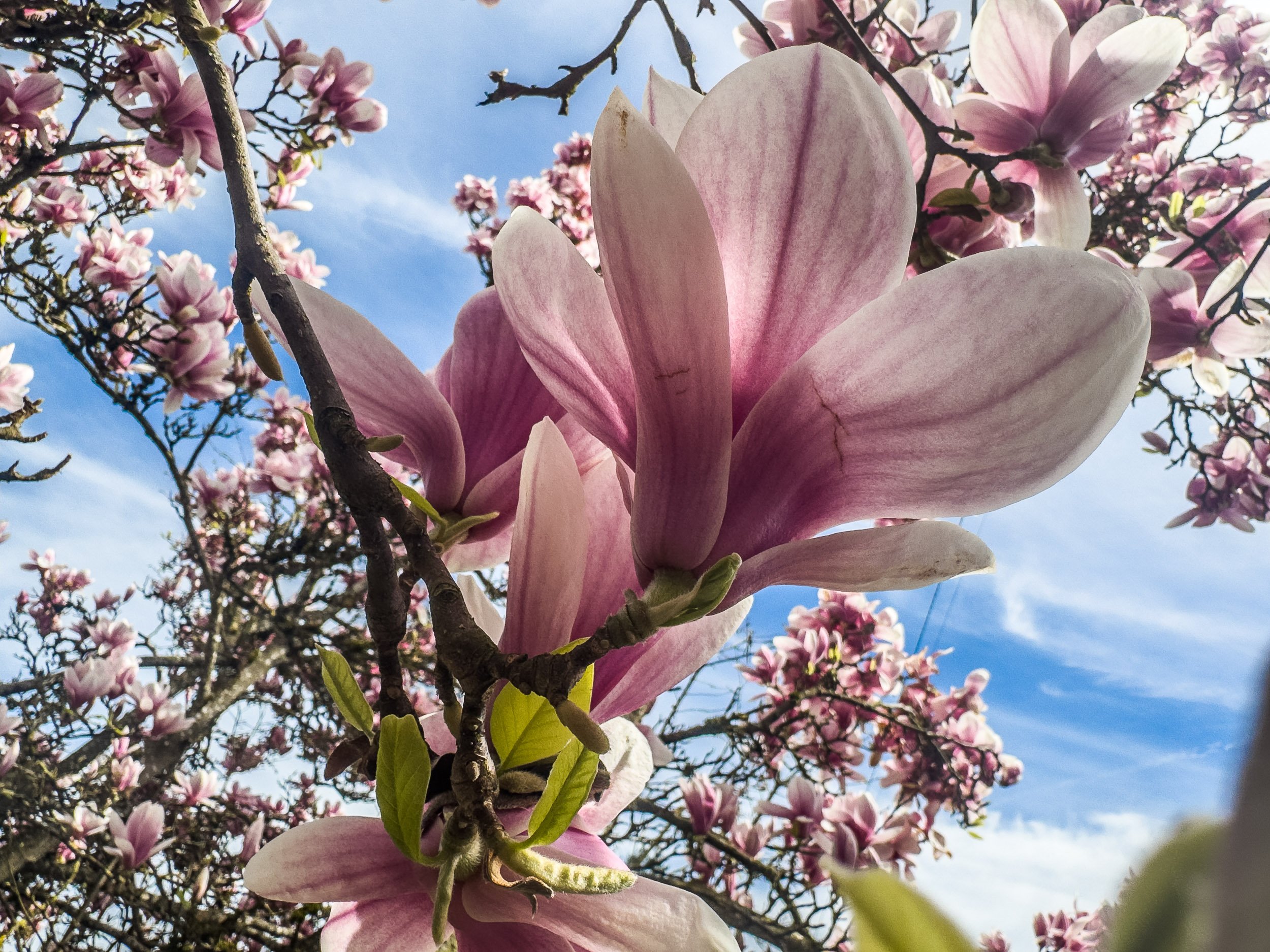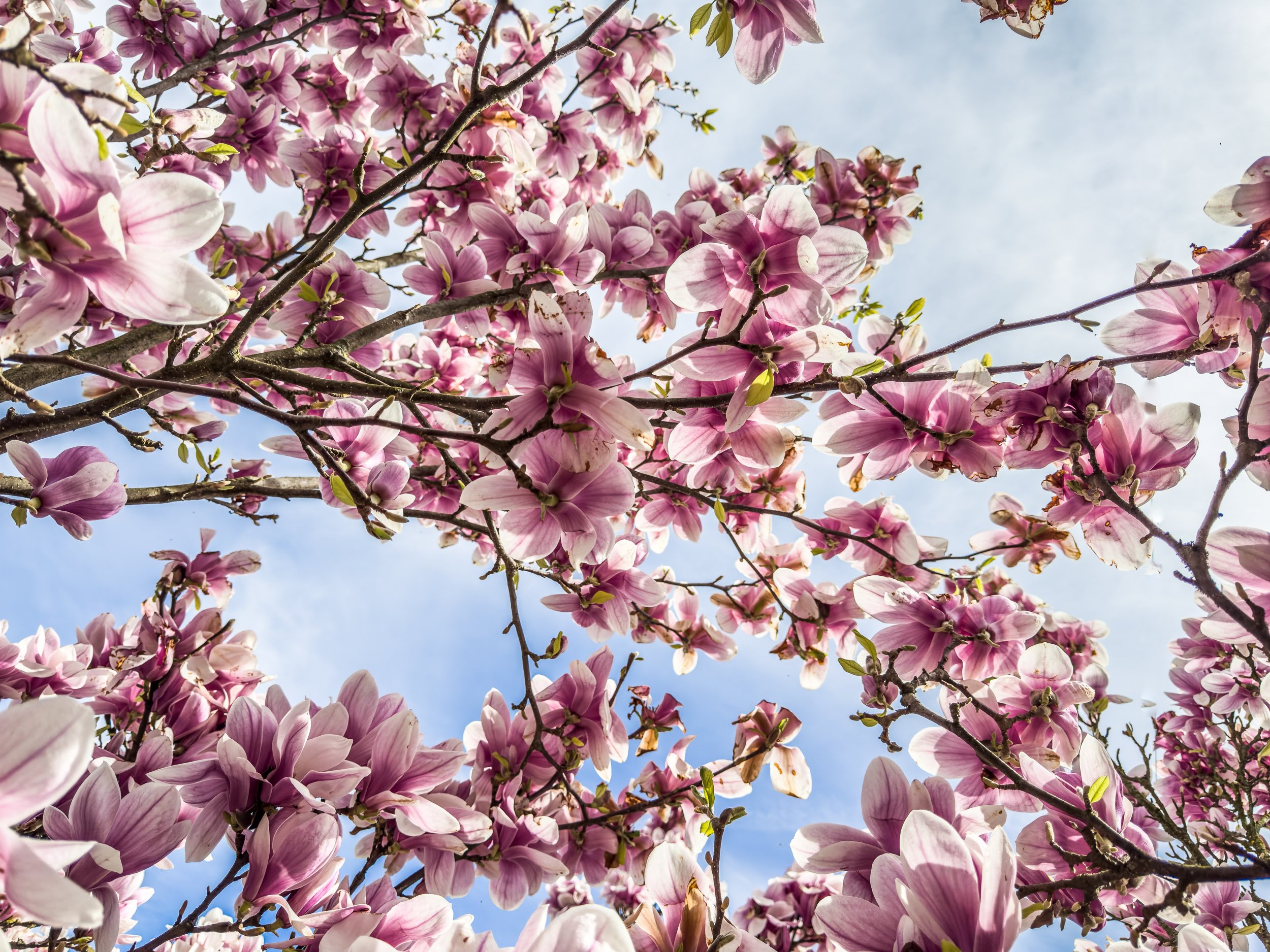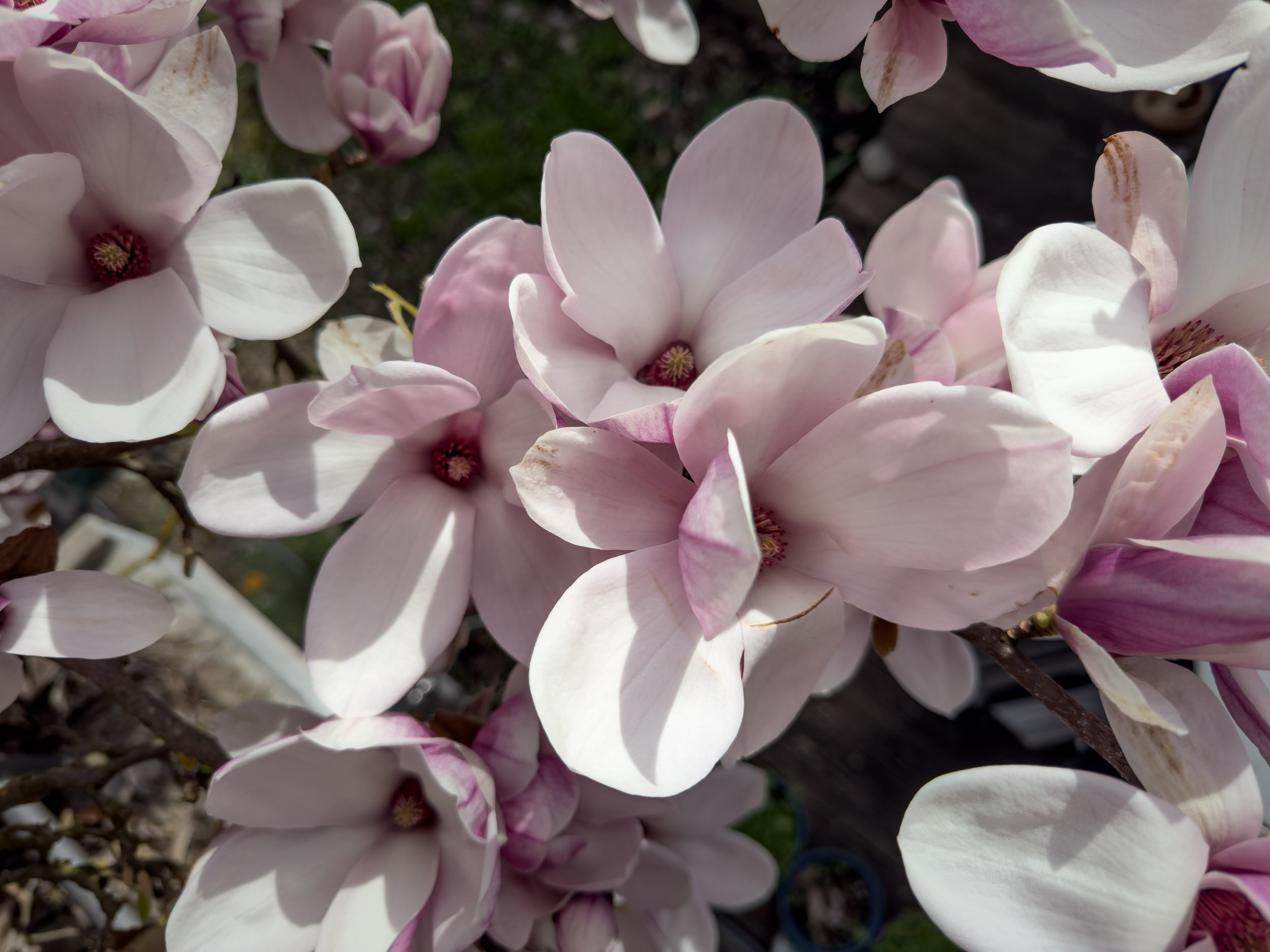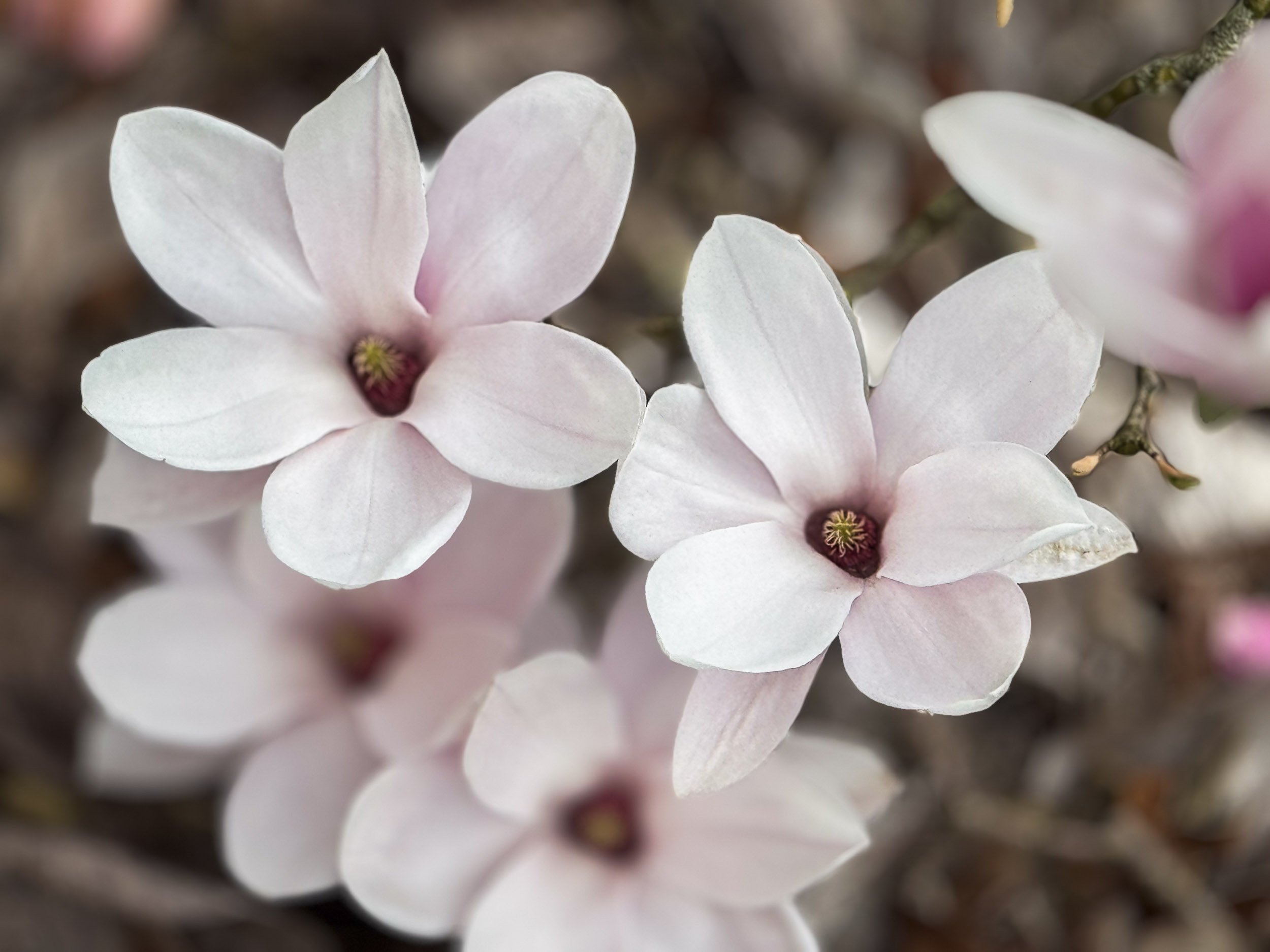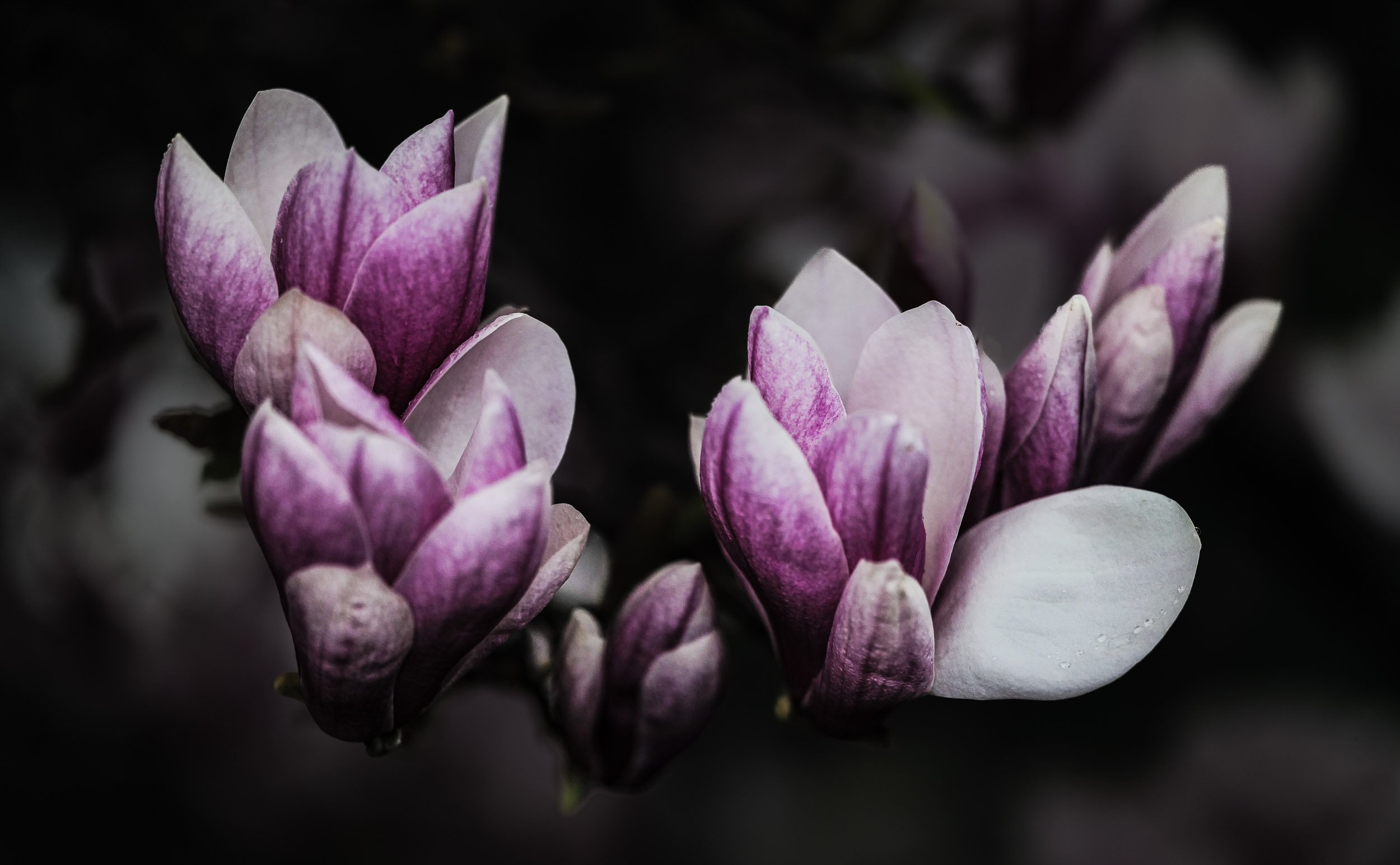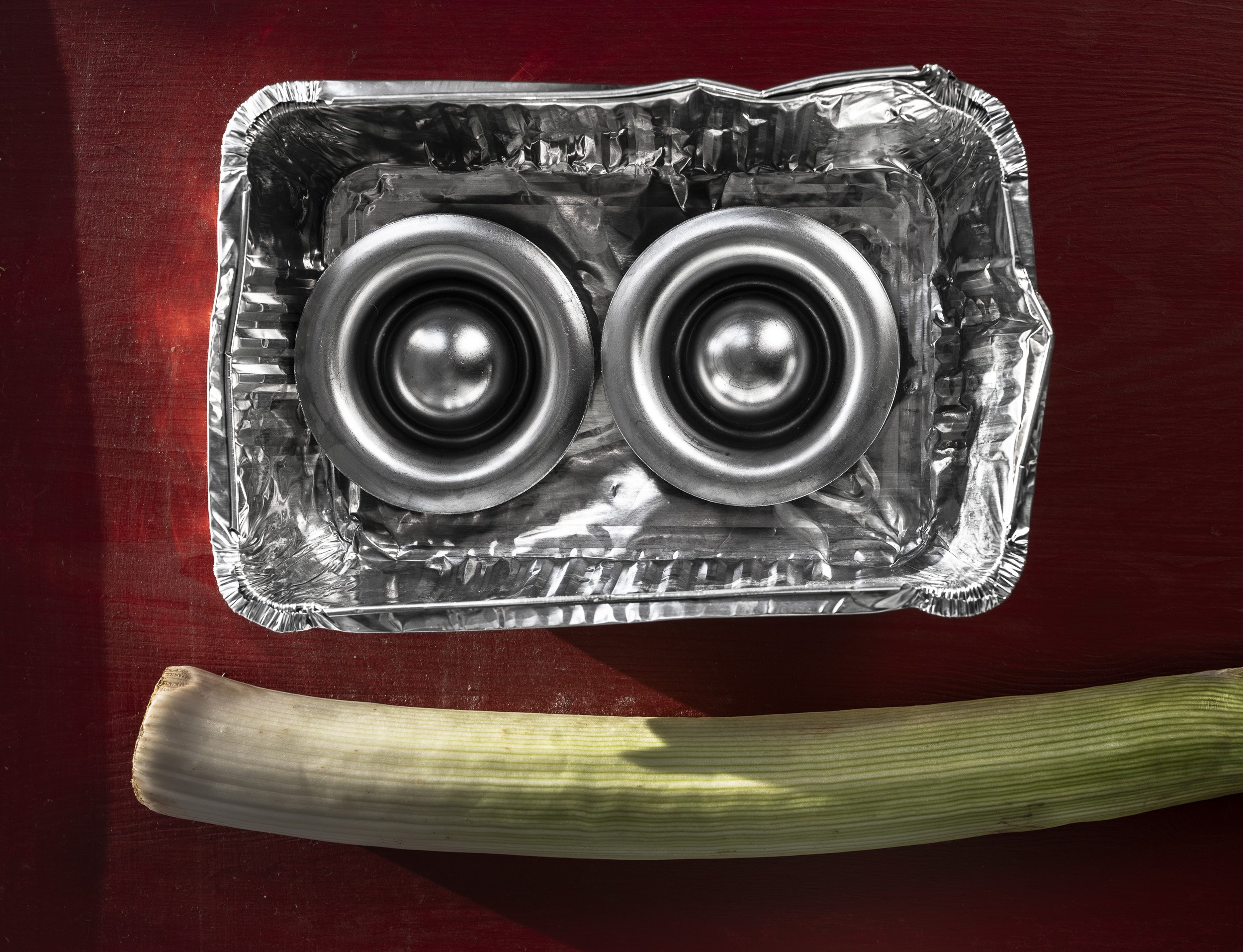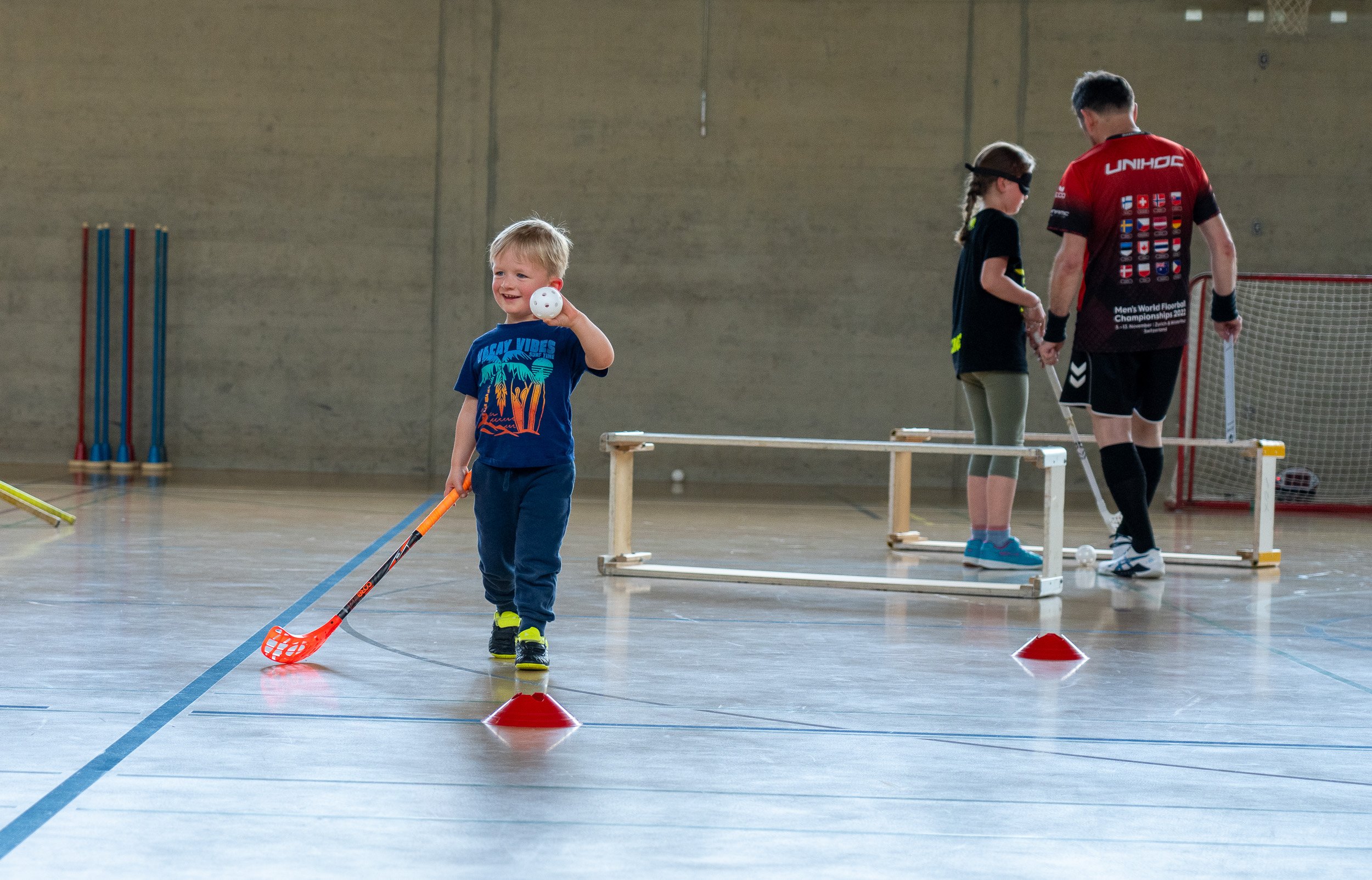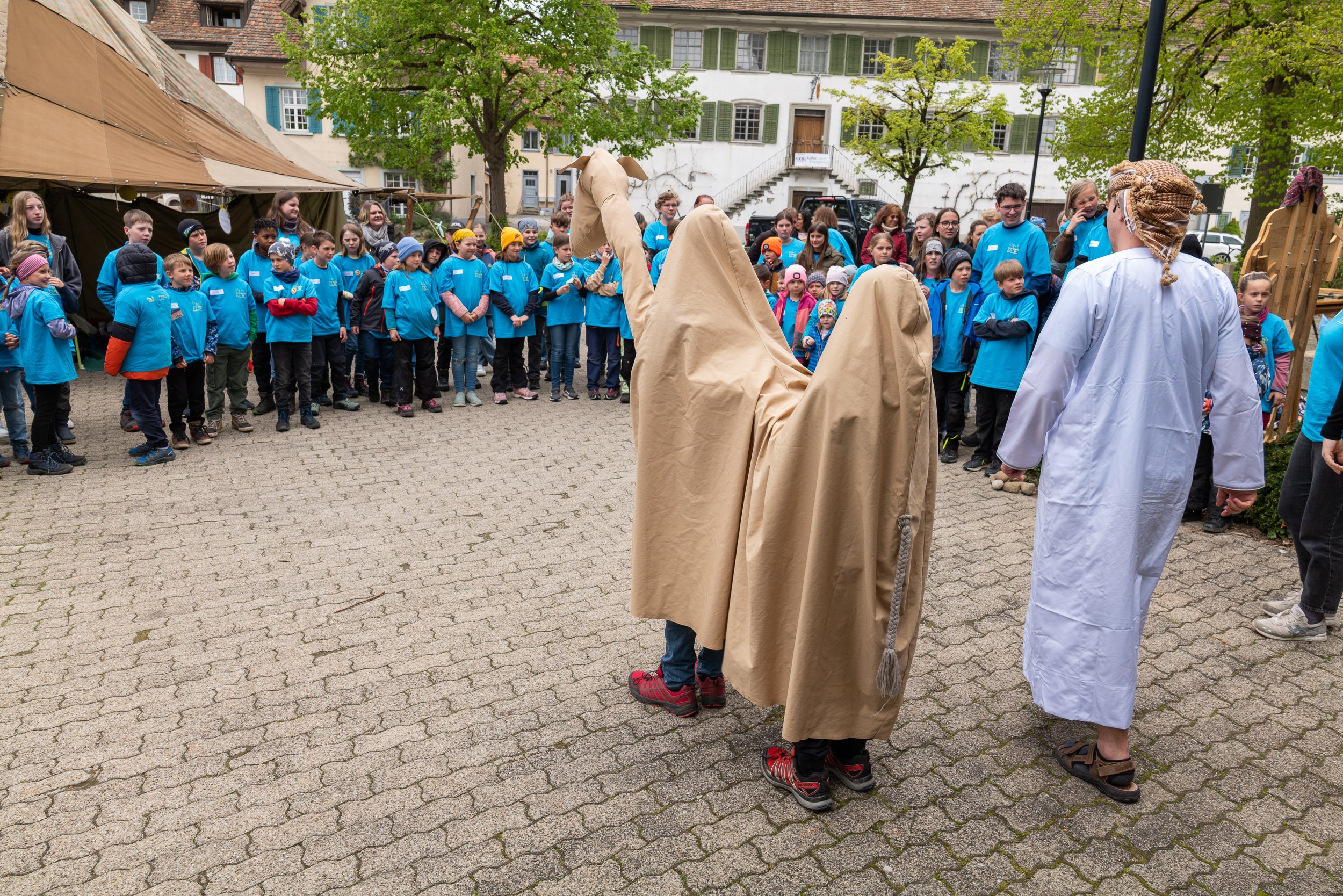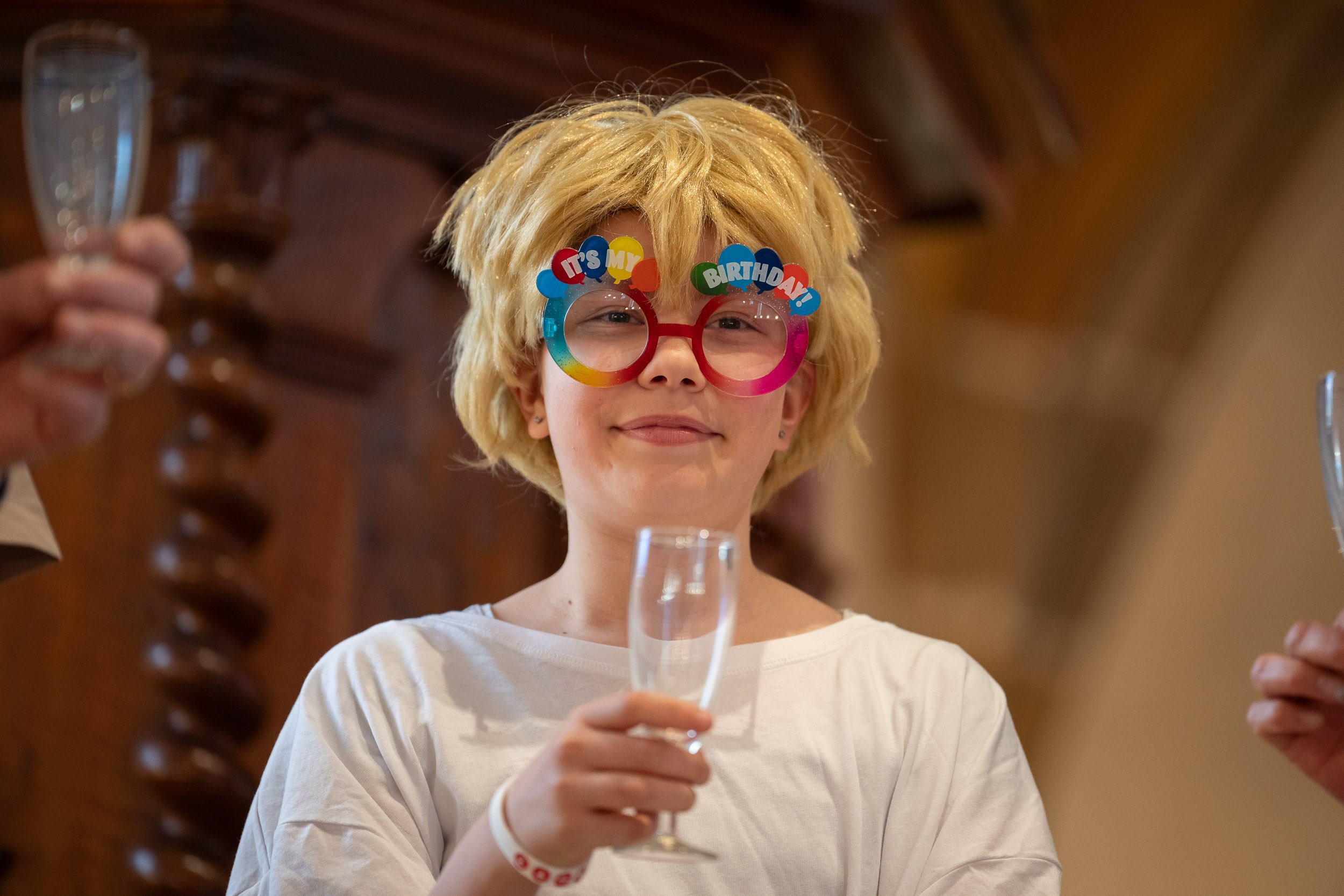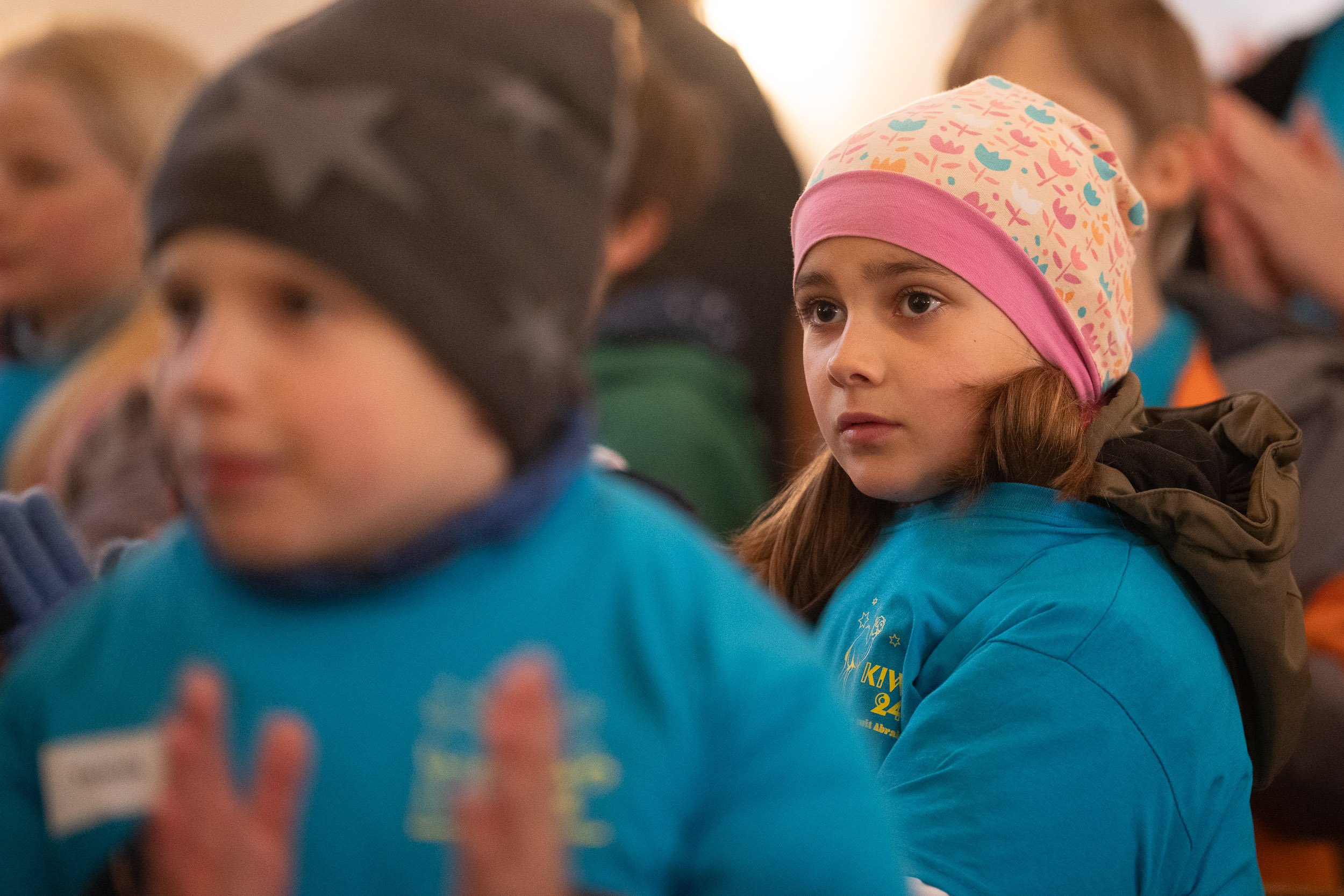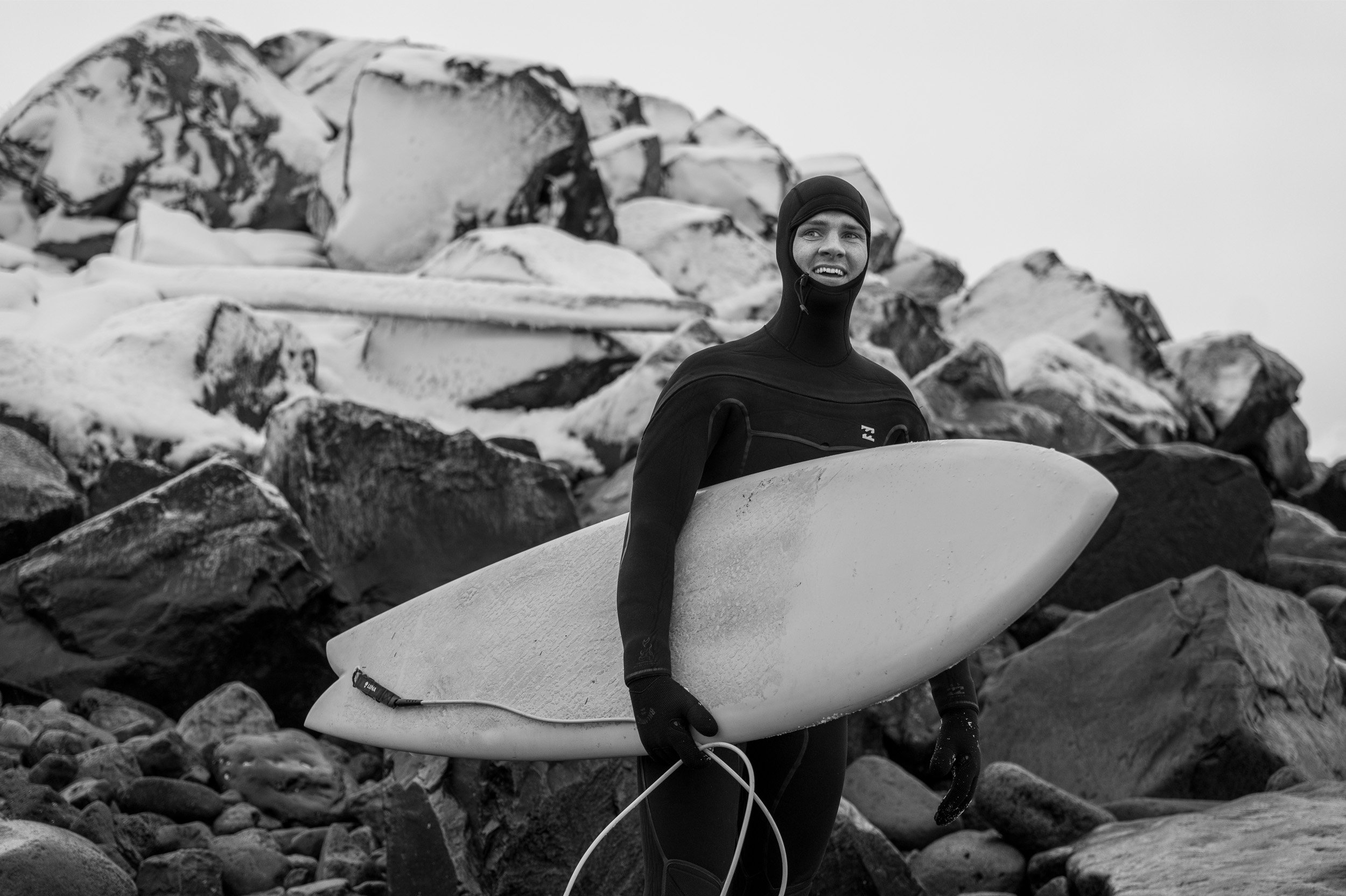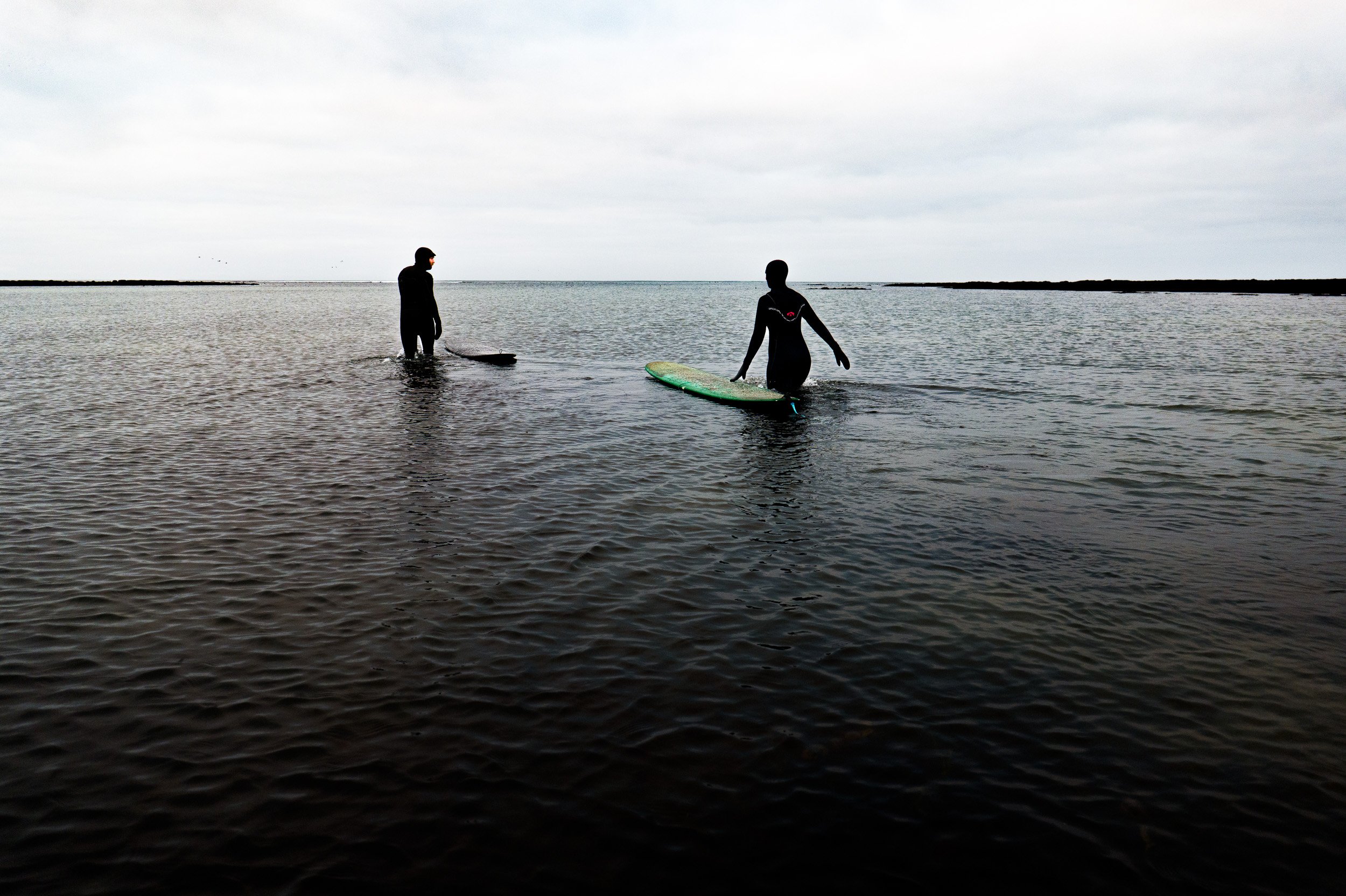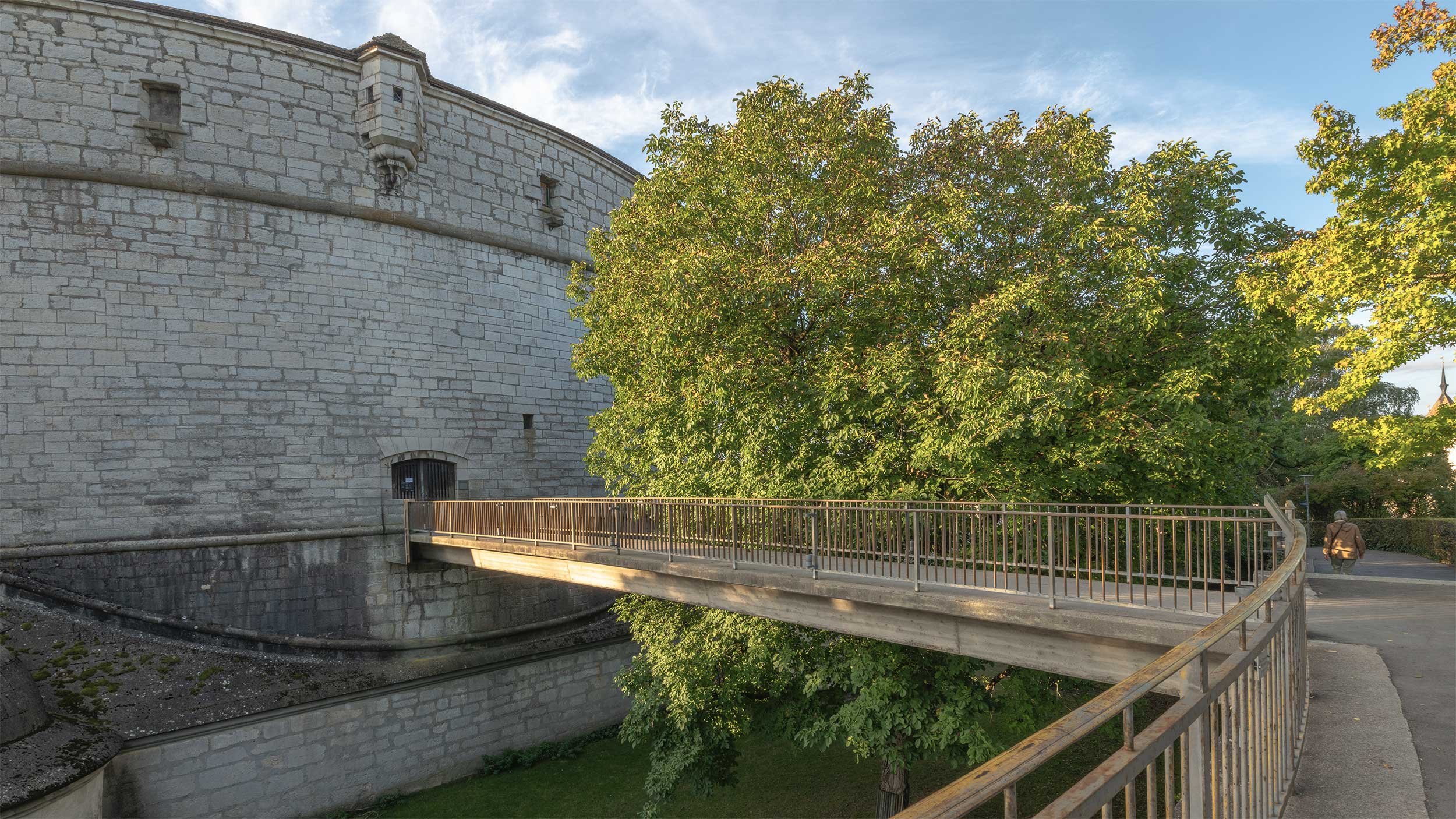Blog
Purchase my images as digital artworks
You can now purchase selected motifs from me as digital works of art.
I'm delighted that Art of Reason is distributing a selection of my images exclusively as digital art—as dARTs. So, if you want to acquire a "real Schäublin" in digital form, you can now do so:
What is dART?
Here is the press release from the founders of dART:
A dART is not a digital copy, but a digitally enacted work, a digital, downloadable art medium that uses its inherent differences and flexibility to offer a new experience.
Currently, this means it offers the ability to create multi-layered artwork, integrate backlighting, display multiple viewpoints, and much more. Additional features such as code integration to enable morphing artwork, sound, movement, and much more are currently under development.
In short, the screen is the natural stage for dARTs, a space for flexible forms of expression that allows us to go far beyond the limits of a typical canvas and opens up promising perspectives for the future. Like photography and video before it, it expands the possibilities of art.
After all, artists have long reinterpreted ideas across different media—Munch with "The Scream" in print, painting, and more; Picasso through painting and ceramics; Warhol from Polaroid to screen printing. dART continues this tradition, offering new possibilities for expression in the physical realm with digitally enhanced features.
Through authentication and limited editions, dARTs establish provenance, authenticity, and rarity, making them considered collectibles like signed prints when offered as editions. They can also be produced as "one-of-a-kind" pieces, although this is not beneficial to the art market as a whole.
dARTs are a new frontier rooted in the long-standing tradition of art. The age of creativity has begun.
For those who prefer analogue:
My images are still available as limited-edition fine art prints, framed or unframed. I print the images myself on our high-end printer using premium Hahnemühle paper. Upon request, I can have the images custom-framed for you.
Just completed for a customer: Earth 08 with fine shadow gap, framed in walnut
Two light giants in the test, part 2
Testing the SIGMA 200mm F2 DG OS | Sports and Sigma 300-600mm F4 DG OS | Sports, Part 2
Sigma 300-600mm F4 DG OS | Sports und Sigma 200mm F2 DG OS | Sports
After the first part of the review on the Sigma 200mm F2 DG OS | Sports, the second part focuses on the Sigma 300–600mm F4 DG OS | Sports. Photographic connoisseurs will savor this lens's specs: a very interesting zoom range for certain photographic areas and a constant aperture of f/4.0. Wow! These technical specifications then provide the lens with physical values that are equally impressive: a weight of 3.97 kg and an overall length of 46.79 cm (L-mount) or 46.99 cm (E-mount) without the lens hood. With the lens hood attached, we're probably somewhere in the region of 60 cm (unfortunately, I forgot to measure the length with the lens hood attached).
Even without a lens hood, the Sigma 300–600mm F4 DG OS | Sports is a really large piece of equipment with a length of almost 50 cm, featuring a lot of metal and glass (Sigma press photo).
"Mommy, just look at the man with his big camera" ... with such a giant tube, you stand out, and as you can see, my tripod is rather marginal for the 4.0/300–600 mm ...
When you walk through the zoo with this lens, you'll get almost as much attention as the animals. While the adults simply stare for a long time as you walk by, the children will say outright, "Mommy, just look at the man with the big camera." So – if you need some attention, buy this lens and take a trip to the zoo with it... But joking aside:
Early morning on the Rhine
A sunrise kayaking on the Rhine is an experience hard to surpass in beauty. Gliding silently across the golden water, and, ideally, with the mist rising from the water. We'll meet early in the morning at 6:00 a.m.—besides myself, there's my wonderful assistant Chiara, the two kayakers Jürg and Thomas, and boat captain Peter, who will guide us into the perfect photo position in his wooden boat. Thank you all so much for getting up so early.
I have a pretty clear idea of what I want to capture photographically: the two kayakers on the water as silhouettes with the rising sun in the background. To achieve this, I need good local knowledge and a long focal length so that the sun looks like the sun in terms of size and not like a bright pinhead. It would certainly bear the weight of the recording unit, but would also follow every fluctuation. But often - sometimes only for a fraction of a second - the two paddles are at the same angle and the whole thing looks like synchronized ballet. As with the first part of the test, I only corrected the brightness, contrast and color of all the images, but did not sharpen them.
That's exactly how I imagined it... Leica SL3 with Sigma 300-600mm F4 DG OS | Sports at 300 mm, 1/2000 sec, f 6.3, 500 ISO
Image 1: Leica SL3 with Sigma 300-600mm F4 DG OS | Sports at 465 mm, 1/4000 sec, f 4, 500 ISO
Image 2: Leica SL3-S with Sigma 300-600mm F4 DG OS | Sports at 300 mm, 1/2500 sec, f 8, 320 ISO
Image 3: Leica SL3-S with Sigma 300-600mm F4 DG OS | Sports at 300 mm, 1/2000 sec, f 6.3, 320 ISO
Image 4: Leica SL3 with Sigma 300-600mm F4 DG OS | Sports at 300 mm, 1/4000 sec, f 4, 500 ISO
Image 5: Leica SL3-S with Sigma with Sigma 200mm F2 DG OS | Sports, 1/10000 sec, f/2.2, 100 ISO. Chiara was able to capture a slightly wider angle of view with the 200mm lens.
Image 6: Leica SL3 with Sigma 300-600mm F4 DG OS | Sports at 300 mm, 1/4000 sec, f 4, 500 ISO
Harley in Action
But how does the 300-600mm perform when we focus on fast-moving objects? My friend Marco rides back and forth on his Harley a few times so we can test its limits. He roars toward us at 70 km/h, and we discover that the SL3-S delivers perfect results with the 300-600mm lens. The perspective is even more extreme than with the 200mm lens, and I personally really like the small depth of field. 1/3200 sec., f/4.0, 400 ISO. To document the difference in perspective and depth of field between the 600mm and the 200mm lens, Chiara shoots with the 200mm lens, also setting the aperture to f/4.0.
Image left: Leica SL3-S with Sigma 300-600mm F4 DG OS | Sports at 600mm, 1/3200 sec, f 4, 400 ISO
Image right: Leica SL3-S with Sigma 200mm F2 DG OS | Sports, 1/4000 sec, f 4.0, 400 ISO
The hill climb
Can we top it in terms of speed? Of course. On the second-to-last day of our test period, the race cars roar up the hill in Oberhallau. My wife Ursula and I go on a stalking spree. In the paddock, we manage to capture some exciting shots with the 200cc, which is very easy to work with handheld:
Image 1: Leica SL3-S with Sigma 200mm F2 DG OS | Sports, 1/640 sec, f 2.0, 200 ISO
Image 2: Leica SL3-S with Sigma 200mm F2 DG OS | Sports, 1/1000 sec, f 2.0, 200 ISO
Image 3: Leica SL3-S with Sigma 200mm F2 DG OS | Sports, 1/800 sec, f 2.0, 200 ISO
Images 4 and 5: Leica SL3-S with Sigma 200mm F2 DG OS | Sports, 1/320 sec, f 2.5, 200 ISO
Image 6: Leica SL3-S with Sigma with Sigma 200mm F2 DG OS | Sports, 1/320 sec, f/2.5, 200 ISO. My favorite image because it captures this tender moment before the racer climbs into his bike. Thanks to the 200mm f/2, I was able to photograph the scene unnoticed, and thanks to the wide aperture, the two protagonists are perfectly separated from their surroundings.
The 300-600mm, which is more than twice as heavy and considerably bulkier, isn't as conducive to spontaneous photography ;-). The long tube really comes into its own when it comes to covering distances and photographing the cars on the racetrack. Here, too, we choose the SL3-S for optimal AF performance. The AF switch is again set to AF-C, and the frame rate is set to 15 frames per second. In addition to the ultra-sharp images with a fast shutter speed, I dare to take a short series of shots, panning the camera at a slower shutter speed. The tripod serves as additional stabilization and relieves the strain on my muscles ;-). I appreciate the flexibility of the zoom, which allows me to freely select the image composition depending on my position on the racetrack.
The image is perfectly sharp, and it shows that the 300-600mm lens delivers very good results even at the highest telephoto range.
Image 4: Leica SL3-S with Sigma 300–600mm F4 DG OS | Sports at 476 mm, 1/50 sec, f 10, 200 ISO||Thanks to the zoom, I can act so flexibly.
All pictures taken with a tripod.
Clip: AF performance test with the Leica SL3-S, AF-C, 15 fps, with Sigma 300–600mm F4 DG OS | Sports at 600 mm, 1/2500 sec, f/4, 320 ISO
A little more safari feeling
And then, to conclude our test, we head to the zoo. I love the Masoala Hall anyway, and when you have two such great lenses, you have to make the most of it. At first, I shoot handheld with the 300-600mm and am pleasantly surprised by how well the image stabilizer works. But at some point, my upper arm muscles start asking me if I've packed my tripod, and the rest of the shots are taken with the tripod. In my imagination, I picture myself on safari with this lens, using it with a beanbag chair on the car door with the window rolled down. I'm sure that would be great fun. If I can find a sponsor, I'd be happy to try it out and write a third part of this review ;-).
Image 1: Leica SL3 with Sigma 300–600mm F4 DG OS | Sports at 461mm, 1/250 sec, f/4, 5000 ISO. I took this photo handheld to test the image stabilizer. It works very well. Because I took the photo right after entering the Masoala Hall and the front lens fogged up, I had to dehaze it quite heavily. The image noise is correspondingly high at 5000 ISO, and I would denoise the background of this photo.
Image 2: Leica SL3 with Sigma 300–600mm F4 DG OS | Sports at 600 mm, 1/160 sec, f/9, 1000 ISO, tripod
Image 3: Leica SL3 with Sigma 300–600mm F4 DG OS | Sports lens at 456mm, 1/250 sec, f/4.5, 5000 ISO, tripod, crop. An extremely well-camouflaged Madagascar flat-tailed gecko, difficult to photograph as it's quite far from the trail and completely in shadow.
Images 4 and 5: Leica SL3 with Sigma 300–600mm F4 DG OS | Sports at 600 mm, 1/500 sec, f/4.5, 400 ISO, tripod, crop
Image 6: Leica SL3 with Sigma 300–600mm F4 DG OS | Sports at 600 mm, 1/500 sec, f/4.0, 640 ISO, tripod
Photographing with such an extreme focal length requires practice, and it's better to take a few shots too many than too few. Even slight blurring of the subject can occur. I captured the ibis in image 6 almost perfectly. Here's a 1:1 crop of this image, unsharpened on the left and as I would finalize it with slight sharpening on the right:
Time is running out, but we wander around the zoo a bit longer. We linger at the koalas and flamingos and try to capture the animals as if they weren't in the zoo, but in the wild. This works better with a long focal length than with shorter focal length lenses. Both the 200 mm f/2.0 and the 300–600 mm f/4.0 deliver great results.
Image 1: Leica SL3-S with Sigma 200mm F2 DG OS | Sports, 1/400 sec, f 2.0, 800 ISO
Image 2: Leica SL3-S with Sigma 200mm F2 DG OS | Sports, 1/200 sec, f 2.8, 800 ISO
Image 3: Leica SL3 with Sigma 300–600mm F4 DG OS | Sports at 300 mm, 1/320 sec, f/4.0, 2000 ISO, tripod
Image 4: Leica SL3 with Sigma 300–600mm F4 DG OS | Sports at 600 mm, 1/2000 sec, f/4.0, 400 ISO, tripod
Image 5: Leica SL3 with Sigma 300–600mm F4 DG OS | Sports at 600 mm, 1/2000 sec, f/4.0, 400 ISO, tripod, crop
Image 6: Leica SL3 with Sigma 300–600mm F4 DG OS | Sports at 600 mm, 1/1250 sec, f/4.0, 320 ISO, tripod
My conclusion on the Sigma 300–600mm F4 DG OS | Sports
Using a variety of switches, the 300-600 can be fine-tuned depending on the application.
This lens is built for very specific purposes, primarily sports and wildlife photography. Anyone who works in these genres will have an excellent lens in their quiver (or backpack) with the 300–600 mm, one that delivers when needed, and at a very attractive price for these specifications. The optical performance is high. Sigma claims it's on par with prime lenses in this range. I can easily imagine that from looking at the images, but I'd have to verify it in a comparison test.
As with the 200mm f/2.0, Sigma has equipped this lens with every electronic feature imaginable. It features excellent image stabilization, freely programmable buttons, internal zoom, dust and splash protection, a drop-in filter holder, and much more. I'd particularly like to highlight the focus range limiter. With smaller objects in the foreground, our cameras' AF detection sometimes had a bit of trouble. Limiting the AF range helps greatly in ensuring the autofocus focuses on the "right" part of the focusing distance. As with the 200mm f/2.0, the only downside for Sony users is that the frame rate is limited to 15 fps, and the two teleconverters (1.4x and 2x) are only available for the L-mount system. For both lenses, I don't know whether Canon and Nikon photographers will sooner or later also be able to enjoy these two excellent lenses.
Special thanks
I do these tests voluntarily for the fun of it. That makes it all the more important that friends participate and support me with the tests in their free time. And of course, I also need people willing to let me take their photo ;-). A big thank you to Ursula, Chiara, Marco, Peter, Jürg, Thomas, Angi, Hannah, Eva and Raphael's wedding party, the people at the hill climb in Oberhallau, and last but not least, the animals at the zoo.
All photos © by Peter and Ursula Schäublin and Chiara Denicolo
Two light giants in the test, part 1
Testing the SIGMA 200mm F2 DG OS | Sports and Sigma 300-600mm F4 DG OS | Sports, Part 1
Sigma 300-600mm F4 DG OS | Sports und Sigma 200mm F2 DG OS | Sports
A little background
In sports, you'd say: "Sigma is on a roll." Because the company is currently releasing lenses that make many a photographer's mouth water. ||Markus Zitt from fotointern.ch made contact with Patrick Geissmann from Ott + Wyss AG , the Swiss representative for Sigma. ||At some point, Patrick and I spoke on the phone to arrange a time for the test. ||And, quite casually, I mentioned that there was also a 2.0/200 mm f/2.0 circulating in the rumor mill (we spoke about two weeks before the official launch of this exciting lens). ||Patrick chuckled briefly, and then came the surprising question: "Would you like to test this lens too?" I was so happy that I almost dropped the phone. A few days later, a rather large package with the two precious items arrived. I simply let the lenses "run along" in my everyday photography and even planned a few shoots to put the two Sigma lenses through their paces.
For the speed readers
For those who don't want to read the entire review, here's the short summary with a play on words in English:
«The two lenses are not only big, but they are also great.»
And for those who want to know a little more, feel free to read on:
The 2.0/200 mm
I always had both lenses in my camera bag, although it should be clarified: The 200mm f/2.0 traveled in my camera bag, while the 300-600mm f/4.0 is so large that it comes in a backpack. Which is very practical, because with a live weight of just under 4 kg and a length of almost exactly 47 cm (without the lens hood attached), the thing is so large that it makes perfect sense to pack it separately. I tested both lenses with the L-system mount. I used the Leica SL3 and the SL3-S as cameras. Anyone who knows me knows that I'm not a big fan of testing under lab conditions and pixel peeping. Images are usually shot outdoors or in the studio, not in a lab. Therefore, both cameras and lenses have to prove themselves in the everyday photographer's life, not under some kind of "clinical" test conditions.
Bulky, but not unwieldy: the Sigma 200mm F2 DG OS | Sports (Sigma press photo)
A first approach: Portrait shooting in the garden
Almost at the same time as the large Sigma package, Angi and Hannah arrived – two friends of ours on their way from the north to the south. And because I was itching to at least try out the 200mm f/2.0, I asked them if they'd be available for a spontaneous shoot in our garden. "Of course," was the reply, and so I mounted the bulky-looking 200mm lens on the SL3. Although the lens weighs 1.8 kg, the camera and lens feel well balanced. And when you're holding a lens with a maximum aperture of f/2.0, you naturally want to shoot with it wide open. At least I do. Otherwise, I can always buy a lens with a lower aperture. And these two pairs of shots demonstrate the smaller depth of field that the jump from f/4.0 to f/2.0 brings:
Picture on the left: Leica SL3 with Sigma 200mm F2 DG OS | Sports, 1/320 sec, f 2.0, 100 ISO
Image right: Leica SL3 with Sigma 200mm F2 DG OS | Sports, 1/160 sec, f 4.0, 100 ISO
Picture on the left: Leica SL3 with Sigma 200mm F2 DG OS | Sports, 1/640 sec, f 2.0, 125 ISO
Image right: Leica SL3 with Sigma 200mm F2 DG OS | Sports, 1/320 sec, f 4.0, 125 ISO
All images have been optimized for brightness and contrast in Lightroom, but not sharpened, so you can judge what the lens delivers when used with the Leica. Even zooming in on the images on the camera screen leaves me speechless: The 200mm is so sharp, even at full aperture, and delivers a level of detail that exceeds my expectations.
Leica SL3 with Sigma 200mm F2 DG OS | Sports, 1/640 sec, f/2.0, 125 ISO. The 1:1 crop below shows the fine detail even at the widest aperture. However, the eyebrow is already partially out of focus. Therefore, the AF system must focus with absolute precision.
As soon as you have more than one person in the picture, it becomes difficult to achieve a good sharpness at a fully open aperture.||It may be that the edge sharpness theoretically increases somewhat by stopping down, but in practice you can already exploit the potential of the lens with the aperture fully open.
Image left: Leica SL3 with Sigma 200mm F2 DG OS | Sports, 1/100 sec, f/2.0, 200 ISO. The depth of field is so small that Angi is already out of focus.
Center image: Leica SL3 with Sigma 200mm F2 DG OS | Sports, 1/100 sec, f/2.0, 200 ISO. I asked Angi to move a little further back, but the outermost eye is still not quite sharp.
Image right: Leica SL3 with Sigma 200mm F2 DG OS | Sports, 1/100 sec, f/5.6, 1600 ISO. Stopped down to ensure both people are in focus. The leaves in the foreground become more defined by stopping down.
Luis Aellig in concert
In my opinion, one of the main uses for the 200mm f/2.0 is stage and concert photography. There, the lens can make a real difference thanks to its combination of long focal length and fast aperture. It was a good thing that during my test period, a small, intimate concert by Luis Aellig and his band was taking place just 200 meters walking distance from our house. The small, intimate setting is great, the light is dim, and that's precisely what a real-world test is, where the lens has to prove itself. For the concert shots, I chose the SL3-S because it delivers top results at high ISO ranges.
Left and center image: Leica SL3-S with Sigma 200mm F2 DG OS | Sports, 1/200 sec, f 2.0, 3200 ISO
Image right: Leica SL3-S with Sigma 200mm F2 DG OS | Sports, 1/250 sec, f/2.0, 5000 ISO. I deliberately focused on the glasses because they are the visually dominant element.
And if you get close enough to the musicians, you can also capture wonderful detailed shots with the 200.
Both images: Leica SL3-S with Sigma 200mm F2 DG OS | Sports, 1/250 sec, f/2.0, 2500 ISO. The image stabilizer works very well. However, due to the musicians' movement, I had to keep the shutter speed rather short.
Wedding photography with the 2.0/200
During the test window, my wife Ursula and I had the honor of photographing Eva and Raphael's wedding at the bride's parents' farm.||So she grabbed the 2.0/200mm and - purely from a photographic perspective, of course - fell in love with the lens.||In her enthusiasm, she shared the shots with the guests, and suddenly everyone wanted to have their photo taken with the "miracle lens."
And the guests are thrilled with the results.
Ursula's enthusiasm is contagious, and I also take some shots with the 200mm.||Sometimes, the long focal length makes me feel too far away from the people, but of course, there are always situations where a greater distance is definitely an advantage.||Here are some shots from the wedding reception, with special thanks to Eva, Raphi, and all the guests for allowing us to share the pictures:
Image 1: Leica SL3 with Sigma 200mm F2 DG OS | Sports, 1/640 sec, f 2.0, 50 ISO
Images 2 and 3: Leica SL3 with Sigma 200mm F2 DG OS | Sports, 1/3200 sec, f 2.0, 200 ISO
Image 4: Leica SL3 with Sigma 200mm F2 DG OS | Sports, 1/3200 sec, f 2.0, 125 ISO
Image 5: Leica SL3 with Sigma 200mm F2 DG OS | Sports, 1/1600 sec, f/2.0, 200 ISO, black and white conversion in Lightroom
Image 6: Leica SL3 with Sigma 200mm F2 DG OS | Sports, 1/500 sec, f 4.5, 160 ISO
Image 7: Leica SL3 with Sigma 200mm F2 DG OS | Sports, 1/250 sec, f 2.0, 1250 ISO
Image 8: Leica SL3-S with Sigma 200mm F2 DG OS | Sports, 1/320 sec, f 2.0, 250 ISO
Figure 9: Leica SL3-S with Sigma 200mm F2 DG OS | Sports, 1/320 sec, f 2.0, 1600 ISO
Especially when light is scarce and a shorter shutter speed is needed due to the long focal length and moving subjects, the wide aperture lens allows you to keep the ISO within a reasonable range. Sure, you can denoise images in post-production these days, but you always lose detail.
Do you need a 200mm with such a large aperture?
If I photograph an object very close up with the same lens and the same aperture, the depth of field is much smaller (macro photographers can tell you all about this) than with an object that is further away, such as a landscape. If I now take a portrait of a person with a 90mm (or 135mm) lens and then mount the 200mm lens on the camera, I have to increase my distance to the subject in order to achieve the same detail. If you can choose your shooting point freely, the high initial aperture of the 2.0/200mm does not give you any real advantage in terms of depth of field.
My assistant Chiara, photographed on the left with a 200 mm f/2.0 and on the right with a 90 mm f/2.0. The perspective naturally changes due to the different shooting distances, but the sharpness and blur are virtually identical. And you can see: the 200 mm f/2.0 is perfectly suited as a portrait lens.
Conclusion on the 2.0/200mm
Reading the lens's specifications is almost dizzying. Not just because of the maximum aperture, but also because Sigma has incorporated many useful technologies into the lens. These read somewhat cryptically and sound something like this: HLA (High-Response Linear Actuator), OS (Optical Stabilizer) with OS2 algorithm, internal focusing, NPC (Nano Porous Coating), water and oil-repellent coating (front lens), OS switch, focus range limiter, and so on... We can assume that a Sigma lens in this price range has everything technically possible on board. And then, only practical use counts.
The combination of focal length and light intensity is unrivaled: Besides the 2.0/200 from Sigma, I can only find one other 200mm prime lens for the L-mount, but it's a fully manual lens without autofocus with a maximum aperture of 4.0 from a manufacturer called Zhongyi Optics. Also available for L- and E-mount.
Addendum: Meanwhile, Laowa has announced a 200mm f/2.0, which, according to rumors, will initially be available for Canon EF, Sony E, and Nikon Z. Further versions are planned, so perhaps something will come later. Fujifilm also offers a 200mm f/2.0 – but for its APS-C sensor, which would then correspond to a 320mm lens on a full-frame sensor.
Part 2 follows
In the second part of the report, I'll talk about how the 300-600mm f/4.0 performs in practice and, to some extent, demonstrate the focal length difference compared to the 200mm f/2.0. The focus of the second part will be on the 300-600mm f/4.0, but more practical examples with the 200mm f/2.0 will follow.
Small spoiler: In the second part of the review, we'll be out kayaking early in the morning, among other things. Here's a first shot with the really long bag: Leica SL3-S with Sigma 300-600mm F4 DG OS | Sports at 331mm, 1/640 sec, f/4.0, 320 ISO, photographed from a dinghy and thus, logically, without a tripod.
All photos © by Peter and Ursula Schäublin and Chiara Denicolo
Photo trip to Iceland in summer 2026?
A small and exclusive photo trip to Iceland with friends in the summer of 2026. Something for you?
We're often asked if we'd organize a photography trip to Iceland. After several trips to this fascinating country, we have a pretty clear idea of what we'd like to show you in Iceland and how we'd travel. Here's an initial sketch of what that might look like:
Destination of the trip
Marvel at Iceland's nature
Developing conceptual thinking for a photography project
Develop your photographic skills
Image editing on the go, as time allows
Optional: learn how to take photos with a drone
Duration
14 days, almost certainly from July 20 to August 2, 2026. That's how much time we would need to visit the interesting spots. July is the best month for traveling inland, given the conditions.
Format
On the road with two Land Rovers equipped for the highlands, we'll visit the most beautiful photo locations in Iceland, including the more difficult-to-access ones. Important to note: Iceland's weather can be very challenging, even in summer.
Group size
Minimum of 6, maximum of 8 people. We deliberately want to keep the group small so that everyone benefits optimally and we remain flexible. With six people, the trip would be more comfortable, but more expensive. With eight people, the Land Rover would be a bit more cramped, but the trip would be less expensive.
Kameraequipment
It's important that you bring a camera with a lens that lets you turn off the automatic mode. In terms of lenses, you don't really need extreme focal lengths, since we're not currently planning on photographing birds. A zoom lens in the normal focal length range or a corresponding prime lens will suffice. A tripod is very useful.
Whenever possible, I'll demonstrate on-site how to edit the images afterward using Adobe Lightroom. You'll need a laptop with this program installed. However, you're of course free not to edit any images during the trip or to use other image editing software.
We plan to organize a pre-trip meeting with all participants in spring 2026 to discuss questions about the trip and photo equipment.
Overnight stays
Partly in hotels, partly in simple accommodations (a few overnight stays in large groups, as there are practically no hotels in the interior). We currently estimate that about four to five nights will be in simple accommodations, with the remaining nights in B&Bs or hotels.
Food
Ursula would usually cook for us.
Approximate cost framework
Depending on the number of participants, approximately CHF 7000 to 8000,
Included: a preparatory afternoon with us around spring to discuss the trip and the photographic goals, meals cooked by Ursula and final dinner in a great restaurant in Reykjavik
exclusive: flight Zurich - Reykiavik and possible dinners in hotels
We do not see this trip as a normal commercial offer, but as a trip with friends.
If we go ahead with the trip, we'll have to start booking at the end of October. Iceland is very popular, so bookings must be made early.
If you would like to take part in this trip, please contact us by October 20th – either by phone (052 640 00 99) or by E-mail.
If at least six people register their interest in participating, we will begin planning.
Iceland blew us away
Wild and untamed Iceland has treated us to wonderful glimpses into its natural landscape. Here's a first, colorful photo gallery.
Four weeks on the road with Sir George, our aging Land Rover, three of which were spent in Iceland—it was a very special trip. Iceland once again captivated us with its untamed and unique natural beauty. I pursued a photographic theme this time as well. It will take some time to compile these thematic images. For those who want to immerse themselves in some visual impressions of our trip, here's a colorful mix of photos with impressions of nature—and of another airplane wreck we discovered.
We photographed with the Leica SL system, which easily handled the challenges posed by the sometimes harsh weather conditions. The drone footage was shot with a DJI Mavic 3 Pro. All images are © by Peter and Ursula Schäublin. For a full view of the image, click on the corresponding subject.
Impressions from the Pentecost photography course
Great feedback from the Whitsun photography course. Maybe something for you too?
Every time I teach a photography course for beginners, I'm fascinated by how quickly the participants progress. Some people, some of whom have never consciously heard terms like "aperture," "shutter speed," and "focal length" before, or who have never dealt with light and image editing, have already mastered the basics of conscious photography after three days. This means not just randomly shooting, but consciously composing the image, deliberately directing light and exposure—even over- or underexposing occasionally, and sensibly saving and editing images on the computer. It's always an experience for me. And a boost for the participants. Here's some feedback from the participants of the Whitsun photography course:
"With his passion for photography and his love of images, Peter encouraged me in my quest to delve deeply into the diverse parameters of the camera. The days we spent together were educational, exciting, challenging, and humorous... – Thank you!" (Brigitte)
"Peter is a very good teacher and motivator. He empowered me by letting me delve into the secrets of photography. His enthusiasm for the image, in whatever form, is contagious." (Elisabeth)
"The three-day photography course with Peter Schäublin was an amazing experience for me. I had never held a camera before, but with a lot of patience and expertise, Peter managed to not only teach me the technical basics but also awaken my love of photography. I came as a beginner – and left with a completely new perspective on the world. Thank you, Peter, for this inspiring journey of photography!" (Sejla)
Small groups guarantee individual attention.
Practice and theory go hand in hand
To ensure that the content isn't just learned in theory, we'll put what we've learned into practice right away. The following picture block shows photos taken by participants during the course. Keywords:
Working with small focus areas
Effective exposure with motion blur
Different shooting angles
Creative image cutouts
Targeted under- or overexposure
Developing variants with Adobe Lightroom
© of the pictures by Karin, Daniel, Elisabeth, Liliane, Brigitte, Sandra and Sejla
Would you also like to discover photography?
I regularly offer photography courses and individual training sessions in Schaffhausen or—for individual training—at a location of your choice. You can find information about this in the "Training" chapter.
With Sophia in the Masoalahalle
Photographing together with Ursula's niece in the Masoala Hall
There are days when everything just works. That's what happened yesterday when Ursula's niece Sophia and I were out on a photo safari in the Masoala Hall . The geckos and lemurs were more active than I've ever seen them before. It's a good thing we'd packed enough camera equipment. Without much prior experience, Sophia photographed with the Leica SL3 – and captured some fantastic images. I was particularly struck by her sense of form and structure. After three wonderful hours in the Masoala Hall, I asked her if she had also taken photos with her mobile phone. Her answer: "I picked up my mobile phone once, but immediately saw that the pictures were worlds better with the 'real' camera. That's why I didn't take a single picture with my mobile phone." So: The younger generation is definitely enthusiastic about cameras with interchangeable lenses ;-).
Since Sophia had to go home immediately after her time at the Masoala Hall, I took the liberty of selecting her twelve top pictures:
Sophia's best-of selection
(For a full view of the image, click on the corresponding motif)
My best-of selection
(For a full view of the image, click on the corresponding motif)
Would you also like to discover photography or improve your skills?
I regularly offer photography courses and individual training sessions. You can find information about these in the "Training" chapter.
A big thank you to Zurich Zoo and its employees
The Masoala Hall is magnificent. You can immerse yourself in the tropical rainforest of Madagascar. It's great that you can take photos, and it's great that there are always volunteers on hand to point out specific animals or plants, explain their context, and share information and tips with great friendliness.
50 out of 8000
Back from Nepal with many impressions. My 50 favorite photos.
In April, I was part of a three-person photo and film team in Ladakh and Nepal to document the work of Himalayan Life
Magnolia 2025
My long-exposure photography experiment with the magnolia tree in our garden is entering its twelfth round.
For the twelfth consecutive year, I wanted to photograph the blooming magnolia tree. The goal of my long-term project is to find out whether our perspective on something changes over the years and whether the camera I use influences the result. In 2024, I took these photos with an iPhone 15 Pro Max because I didn't have a new camera at my disposal. But at the time, I had to admit to myself that I prefer taking photos with a "real" camera. This year, the strong backlight during the blossoming stage inspired me to create a series that I shot with a Leica SL3. I further enhanced the strong contrasts in the image editing. It's fascinating how many tiny hairs the flower buds have.
2025
Leica SL3
2024
iPhone 15 Pro max
2023
Leica SL2 with the two fixed focal lengths SL 35 mm and SL 90 mm
I limited myself to two fixed focal lengths.
2022
Leica S3, Leica SL2, Sony a1
For the first time, I photographed with more than one camera. Variety is the spice of life ;-).
2021
Leica SL2
In 2021, I missed the flowering period, so the yield was relatively poor.
2020
Leica SL2
2019
Fujfilm GFX100
2018
Leica CL
2017
Panasonic GH5
2016
Leica SL
The Leica SL was definitely a boost for my photography. Mirrorless photography with targeted over- and underexposure was (and still is) a brilliant experience. Moreover, the only lens available at the beginning—the SL 24-90mm—exhibited a quality that I had previously only experienced with prime lenses in the 35mm DSLR range.
2015
Nikon D810
2014
Nikon D810
The nerds behind the red dot
A look behind the scenes at the Leica headquarters in Wetzlar
Article in cooperation with fotointern.ch
A little history
Everything at the Leica headquarters in Wetzlar breathes the history of photography: photojournalists have captured decisive moments in history using products from the brand with the red dot. And this year, Leica is celebrating its 100th anniversary. The story, however, began before 1925: In 1914, Oskar Barnack, then head of film camera development at Leitz, developed a "miniature camera." Due to his asthma, the passionate nature photographer was unable to carry around heavy plate and large-format cameras. So he tinkered with a lightweight, compact camera that he could load with perforated 24 mm film. He rotated the film 90 degrees to achieve the 36 x 24 mm format that is still familiar today. To compensate for the much smaller film format compared to large-format cameras, he invested in the quality of the lenses. To this day, the quality of Leica lenses is legendary.
After Oskar Barnack had constructed the original Leica in 1914, the "Leica 1" was introduced in 1925 (Leica press photos)
Ups and downs
Many internal discussions followed as to whether the company should dare to mass-produce this camera and bring it to market. The whole back and forth culminated in a meeting in June 1924 with Ernst Leitz II's legendary statement: "I hereby decide: We'll take the risk." And then, exactly 100 years ago – in 1925 – the first Leica was launched. It revolutionized photography. In one fell swoop, Leica (the word is a combination of Leitz and Camera ) became the technological and market leader in the camera sector. But it wasn't long before Japanese competitors copied the rangefinder camera concept. And in 1936, the first 35mm SLR camera was presented at the Leipzig Spring Fair: the "Kine Exakta" by the Dresden-based company Ihagee. This presented the rangefinder camera concept with serious competition, and sales of this camera design declined rapidly. The SLR camera had several advantages thanks to its design, which allowed the image to be seen through the lens (a kind of WYSIWYG). Leica struggled to enter the SLR world: It wasn't until 1964 that the company introduced the Leicaflex. And then Leica granted Japanese camera manufacturer Minolta access to the autofocus patent, giving it a competitive advantage. Things became even more difficult with the advent of digital photography: Due to the shorter flange focal distance, it was much more challenging to bring the Leica M cameras into the digital age without changing the design and iconic appearance.
Close to bankruptcy
At the beginning of 2000, Leica was facing financial difficulties, and without the courageous intervention of Dr. Andreas Kaufmann, the venerable company would almost certainly no longer exist. He acquired a majority stake and gave the company a drastic overhaul: Within a few years, the company caught up with its technological lag, and thanks to the skillful alliances forged by Dr. Kaufmann, the company, even as a niche player, is able to incorporate cutting-edge technology into its cameras.
Leica has always been undisputed as a lens manufacturer. I think it's no exaggeration to say that Leica is one of the best lens manufacturers in the world—for many, even the best.
The niche player with the market leader image
Without having had or still having insight into the internal processes, I assume that Dr. Kaufmann played a key role in shaping Leica's new strategy: The company flourished, and the Leica name once again became synonymous with top quality and outstanding solutions. The rangefinder camera line - the Leica M - is still the flagship in terms of image, but the fully manually operated camera without autofocus is definitely not for everyone. In my opinion, there would have been a risk that Leica would have remained a marginalized player if they had only relied on the M. But here too, Dr. Kaufmann and his team acted with vision: In addition to various compact and instant film models, Leica has launched three further camera lines over the past few years: The Leica Q - a compact camera with a fixed focal length, extremely simple operation and the highest image quality; The Leica SL – the mirrorless system camera that combines the highest quality, ease of use, and flexibility for the demanding and versatile everyday photographer's life; and the Leica S – the medium format system, which is Leica's flagship in terms of image quality. In terms of production volume, Leica is a niche player, but its name and products command the same esteem among photography enthusiasts as a market leader.
I've been shooting with the Leica SL system since 2015, and have since added the Leica Q and the Leica S. Over the years, I've developed a relationship with Leica's developers, and through regular exchanges, I try to provide useful feedback on their cameras, which can then be incorporated into the development of new camera models. Obviously, I'm just one of many voices, but the seriousness with which Leica takes the feedback from me and other dedicated photographers is both an honor and an obligation.
In September, I was able to take a look behind the scenes of the production facility with a small group at a meeting. Photography is normally prohibited, but I was allowed to take some photos to give you an insight into the world of Leica manufacturing. I shot them with the Leica SL3.
From this point on, photography is normally prohibited. However, I was allowed to take a few pictures to give you an insight into the world of Leica manufacturing.
Start of the factory tour
Everything here exudes history. Large-format prints documenting world events adorn the walls. In the foreground, a picture by Steve McCurry, one of my favorite photographers.
The Nerds
Every person I've met and continue to meet at Leica takes great pride in their work. Above all, the goal is to build a product of the highest quality. Every production step is inspected two or three times. Anything that isn't 100% flawless goes back for adjustment. There's no random sampling in Wetzlar; instead, every camera and lens from production is inspected. At the end, the person who performed the final inspection signs their name, thus guaranteeing a flawless product.
To outsiders, the meticulousness of production and inspection may seem almost pathological, but it's the only way to ensure that every product that leaves the Wetzlar factory meets Leica's standards. These nerds double- and triple-check everything, and I have great respect for that.
A little anecdote: Shortly before my visit to Leica, I bought an SL prime lens. These lenses are inspected by Grit Thümmler, among others, whom you can see in picture 8. We chatted for a while, and I found out that it's quite possible that she checked my lens before it left the factory. It turned out to be one of her colleagues, but the fact that there are real people with a name who perform the final inspection of every product is, at least for me, something that earns the Leica brand some bonus points ;-).
Photo graph
The word "photography" comes from "foto grafare," which translates as "to paint (or draw) with light." A wonderful description of what happens when we press the camera shutter. The lens captures the light, focuses it, and channels it for the film or sensor. This is, of course, a purely physical-optical process, but for me there's always something magical about imagining a large live scene condensed into a 36 x 24 mm field. The lens is one of the most important criteria for image quality and impact. Extensive tests that I conducted together with my friend Christian Habermeier (see "Test the best" ) show that the lens has a greater influence on the impact of the image than, for example, the sensor.
Leica works with over 50 types of glass to build the best possible lenses. To achieve this, the company pushes the boundaries of what is physically possible, sometimes going to an almost insane level of effort. We learned, for example, that some Leica cine lenses take an entire day to grind on a CNC machine just for a single lens—and a lens can easily have ten lenses. Each lens is ground and polished to an accuracy of 0.1 micrometers, or 1/1,000 of a millimeter (!). This precision is a major factor in giving Leica images that highly three-dimensional effect that photography enthusiasts call the "Leica look."
Some of the glass types used are so sensitive to air that they would quickly oxidize after grinding. Therefore, the ground lenses are coated with a protective layer if necessary (see Figure 3), which is then removed shortly before coating. After the coating process, the glass can no longer oxidize. Therefore, in certain cases, coating a lens not only improves image quality but also protects the lens. Figure 4 shows a stack of glass that is coated in the middle and uncoated on the outside. The difference is striking.
The outstanding lens calculations, the extreme manufacturing precision, the high quality of the materials used for both the lenses and the lens bodies, the willingness to push the boundaries of what is possible, and the thorough inspection of each lens are all responsible for the extremely high quality of Leica lenses. Once you've seen and understood this process, you can understand why these lenses carry a rather high price tag.
Individualization
Because Leica is a manufacturer, you can customize your camera if you wish – for example, with an engraving or custom leather trim. How about a custom leather trim in the color "Vamp," for example?
What’s next for Leica?
After our month of testing the Leica SL3-S in September 2024, Christian Habermeier and I personally returned our pre-production cameras to Wetzlar. Together with Urs Tillmanns, founder of fotointern.ch, we took the opportunity to discuss with some key Leica people what the future holds for the company with the red dot. Of course, Leica isn't spilling all the beans, but here are a few summary thoughts from the conversation:
In general, the interplay between hardware and software is something Leica pays great attention to. This means that an image is far from finished once the sensor saves its colored pixels. The processing of the image data and the import of this data to the computer influence the image file. Even a RAW image is already an interpretation of the captured photo. At Leica, we are giving a lot of thought to how this workflow might change in the future and how the familiar Leica look can be recreated in the digital age. Software capabilities (keyword: AI) are becoming increasingly sophisticated and offer more possibilities for combining with the hardware.
But the process always begins with the lens: As the first link in the chain, it plays a crucial role. Leica is constantly optimizing its lens calculations, the materials used, the autofocus technology, the precision of the production process, etc. This is necessary because the lenses have to keep pace with ever-increasing sensor resolutions: After all, what use is a 60 megapixel sensor if the lens has a resolution of "only" 40 megapixels? Furthermore, the demands on the autofocus are becoming ever higher. Only with precise focusing can the high magnification potential of the new sensors be truly exploited. The mirrorless systems give Leica engineers more freedom in lens design: Because with electronic viewfinders we never see a truly optically generated image, but always an image that has already been electronically processed, certain optical corrections can also be made computationally. This allows, for example, lenses with the same performance characteristics to be built more compactly. The Leica M is also a mirrorless system, because a rangefinder camera never directly shows an image produced by the lens.
Further in-camera functionality would also be conceivable. One example is the perspective correction feature introduced by Leica in 2020, which allows you to correct converging lines directly in the camera. The advantage is that I can see immediately how much of the image I'm losing due to the perspective correction. I know that Leica is putting a lot of thought into other very exciting features in this area.
The development of the four lines – Q, M, SL and S – continues
The Q version with the 43 mm lens was recently released, and I speculate that new Q Monochrom models will follow at some point.
For the M, the M11 was presented at the beginning of 2022, followed by the M11 Monochrom a good year later. There's wild speculation online as to whether the M12—whenever it arrives—will feature a hybrid viewfinder. This would make sense, as it could increase the precision of manual focusing for high-end sensors. "No comment" was the response in our meeting.
In the SL line, Leica has updated both SL model series with the SL3-S. The SL3-S in particular demonstrates that Leica is taking the often-addressed problem of autofocus performance seriously and has it under control. The further development of autofocus will continue to be a high priority in the future – whether through firmware upgrades or with more powerful processors and AF technologies when launching new camera models. Furthermore, the SL3-S demonstrates that the Wetzlar company values the topic of "filming with a DSLM" highly. Various software and hardware solutions are under development, but it's still a bit early to talk about them. I think Leica will surprise us positively in this area (as well) in the near future. Whether there will ever be a "pure" film camera in Leica's upper quality segment is a secret. Sony and Canon offer corresponding cameras, and Fuji has also announced a film camera – for the GFX system, no less. It wouldn't be unreasonable for Leica to establish itself in this area, but that's just my personal opinion and speculation.
The Leica S3 is currently no longer in production. From a production perspective, it was clear from the outset that there would only be a limited number of S3 cameras. This limit was already reached in the course of 2023. Leica – including Dr. Kaufmann himself – confirmed that they are working on a successor model. Leica officials have remained largely silent on this matter. Following logic, I will simply state that the camera will be called the S4, that it will be a mirrorless camera with a resolution of approximately 100 megapixels and a massively improved autofocus compared to the S3. High compatibility with the M and SL lens lines would also be desirable. The task for the developers of the next S camera is not easy, because the S3 set the bar very high in terms of image quality. But here too, I trust the brand with the red dot to make the almost impossible possible – always and with all camera lines, with the goal in mind of providing us with great instruments in the future with which we can perfectly capture the light of world events or even the most banal things that are only important to us, on the sensor.
You sometimes read that the images taken with a Leica, even the cameras themselves, have a soul. A look behind the scenes reveals that so much passion goes into every camera and every lens that it could well be true...
Family photo, which also shows the size ratios (from left to right): Leica Q3, Leica M11, Leica SL3-S, Leica S3 (Press photos Leica)
This article also appeared in an abridged version with slightly adapted text on fotointern.ch .
photoSCHWEIZ 25
For the first time, I'm exhibiting at photoSCHWEIZ 25, the Swiss Photography Exhibition. The exhibition is open until February 11. Here are a few impressions.
This year, I'm exhibiting at photoSCHWEIZ for the first time. The exhibition has been very well attended, and the feedback so far has been overwhelmingly positive. I'm participating with images on the theme of "silence," inspired by the book Ursula and I published last year.
The "star image" is an abandoned bus that I photographed in Iceland. You can also purchase this image as a fine art print .
My main picture at the photoSCHWEIZ 25: the abandoned bus from Iceland
My exhibition island in the Garden Hall (G66).
Over the past 20 years, photoSCHWEIZ has established itself as "the" showcase of Swiss photography. This year, the event is taking place at the Zurich Congress Center for the first time. The organizers have made excellent use of the location. Impressions of the halls and my booth (Photos: Michael Brunner / Peter Schäublin):
The photoSCHWEIZ 25 is open until February 11. All information about the Swiss photography exhibition can be found on the official photoSCHWEIZ homepage.
Leica SL3-S – first impressions
The SL2 was followed by the SL3. And logically, the SL2-S must be followed by the SL3-S. The question that always arises: Is the new model really that much better than the old one? I wanted to know...
It arrived in September of last year: the pre-production model of the new Leica SL3-S. And it made the earth shake a little—at least symbolically speaking. But first things first:
A little over a year ago, my friend Christian Habermeier and I tested a pre-production model of the Leica SL3 in Iceland . We were very impressed with the camera: handling, robustness, image quality – all top-notch. The autofocus was also improved compared to the previous SL2 model, but still had room for improvement when it came to very fast subjects. Christian and I were – and still are – so impressed with the camera that we both now use the SL3 for our reportage photography. The autofocus has been further improved with firmware upgrades, leaving little to be desired for photography. But for filming, the AF bar has been raised. And that's exactly where the SL3-S comes in:
Except for the color of the Leica logo, the Leica SL3-S looks identical to the SL3. The entire operating concept is also identical. Learn what the inner workings of these two cameras, which are virtually identical on the outside, are in this article (press photo: Leica).
The SL3-S convinced me in the field test (photo: Marco Huber).
Why two camera models from the same line?
All camera manufacturers bring different models to market for different purposes. Sony has so many that I've honestly lost track. Leica limits itself to two models, and that makes perfect sense: We have the SL3, which, with 60 megapixels, leaves little to be desired in terms of resolution, and the SL3-S with 24 megapixels, whose sensor, thanks to the larger pixels, delivers slightly better results at high ISO and is better suited for filming. But if you want to film with a camera, you also need a powerful autofocus. And—let's be clear right away: Leica has done its homework here. More on that later.
Working with the SL3-S
At Leica, a whole host of experts are racking their brains over how to keep a camera as simple and customizable as possible. This is difficult because cameras are becoming increasingly complex with more and more functions. Simplicity of operation with ever-increasing functionality – that's a contradiction in terms. But the people from Wetzlar have done a really good job: clearly structured menu navigation, individually programmable screen display, strictly separate video and photo menus, now even color-coded, meaningful icons, etc. With three dials and various buttons that I've assigned to my personal taste, I can tailor the camera 100% to my personal needs. The camera feels fantastic; the dials don't wobble at all, nothing is "flimsy," and the viewfinder image is clear and sharp. The body is milled from a single block of magnesium, and the camera is extremely well sealed against moisture and dust.
In October 2024, Leica gave us a glimpse behind the scenes. This image shows the production stages of the aluminum back cover for the first-generation Leica SL. The latest SL generation (SL3 and SL3-S) features a die-cast magnesium back cover. The advantages of magnesium include significantly lower weight and the ability to cast more complex shapes. Leica is also continuously developing its cameras in the area of materials.
Constance
Whenever I receive a test camera, it naturally comes without an instruction manual. So I have to figure it out myself. Leica has been striving for some time to make the user interface identical for all camera lines – Q, M, and SL. The further development of this interface is carried out with great care and a sense of proportion, so that you can immediately find your way around when switching from one camera line to another, or from an older to a newer model. Therefore, I didn't need any warm-up time with the SL3-S. Turn the camera on and off you go.
Innovation
A lot has changed inside the camera, though. While the sensor still has 24 megapixels, like the SL2-S, it's a newer model. And—truly the most striking and most important thing: The SL3-S's autofocus performs significantly better. It's now at the level I've always wanted for a camera of this kind. Because I don't think much of lab tests, I ask Andrina Trachsel, former Swiss ultracycling champion, if I can accompany her on her triathlon training with the SL3-S—it's hard to find a better and more attractive testing opportunity ;-).
6:30 a.m.: Start of the training day. Andrina begins the warmup, while my assistant Chiara and I prepare the equipment. (Photo: Marco Huber)
Andrina in training
The day is just dawning, the temperature is still on the cool side, and it's drizzling lightly. But Andrina is tough; the weather conditions are no problem for her. It's good to know that the SL3-S is just as capable in this regard. The rainy mood creates a very special ambiance, and right at the beginning, I take a photo that is my favorite of the entire series:
Leica SL3-S, 1/80 sec., f/2, 250 ISO, Apo-Summicron SL 35 mm f/2.0. Image editing in Lightroom
I held the camera just above the water's surface, which is possible because the Q and SL cameras now also have a foldable screen. The APO-Summicron SL 2.0/35mm draws brilliantly, and the difference between the area in and out of focus is striking. It's worth mentioning in passing: Despite their compactness, the 2.0 APO prime lenses are incredible powerhouses. Of course, they're not as small as the M lenses, but that's due to the fact that they're autofocus lenses.
Mounting an SL lens from the APO prime lens series (it's the 75mm). It's easy to see how complex it looks inside. And although the lens is relatively compact, it still has plenty of room for improvement in terms of resolution. Even at 60 megapixels, it's not yet at its performance limit.
The advantage of the 24-megapixel sensor is that it exhibits lower image noise. Even at 10,000 ISO, the results are still impressive.
Leica SL3-S, 1/500 sec., f/2, 10,000 ISO, Apo-Summicron SL 35 mm f/2.0 – I could have shot this image with a longer shutter speed, of course, but I deliberately wanted to achieve a high ISO value. Image editing in Lightroom (no noise reduction).
The AF endurance test
Meanwhile, it's gotten a bit brighter. Boat captain Toni has arrived. He steers his boat with great sensitivity, allowing me to perfectly photograph and film Andrina swimming in the water. I set the autofocus to face priority and AF-C, and I'm amazed at how accurately the autofocus works, even when only Andrina's swim cap is visible. Here's an example:
41 frames in 2.2 seconds: Despite challenging AF conditions, the SL3-S's autofocus performs flawlessly. It's exactly what I wanted. And here's another sequence from my cycling training:
The film functions
Leica introduced a new feature with the SL3 that initially confused me a bit, but which I now wouldn't want to be without: I can create different film profiles and then switch between them in a flash in the menu. For example, I can create a 6K profile with 30 fps, a 4K profile with 60 fps, a Full HD profile with 120 fps (small downside: 120 fps with 4K unfortunately doesn't work), and so on. Of course, I can also assign different codecs to the profiles. I can switch between these profiles in a flash while filming. A small request for Leica: Currently, the profiles are simply numbered, but it would of course be great if you could assign individual names to the profiles, e.g. "Interview", "Sports", "Slow Motion" or something similar.
BTS: While Andrina crawls gracefully, I hang over the side of the boat to film her. For better control of the frame, I mounted my Atomos Ninja as a control monitor. However, I recorded all clips in-camera to the CF Express B card (Photo: Marco Huber)
The short test film
For my short movie, I film practically everything at 59.94 fps / L-Log / 4:2:2 / 600 Mbps. A standard SD card can't handle that; you need a CF Express B card for that. Like the SL3, the SL3-S has one slot for standard SD cards and one for CF Express B cards. I think that makes sense, because you can continue using your SD cards, but you have the option of using CF Express B cards for demanding filming.
I filmed a sequence in FHD at 120 fps and then upscaled it to 4K using Topaz Video AI. When watching the film, you'll notice that this sequence doesn't fall short of the sequences filmed in "real" 4K. AI-assisted interpolation also opens up new possibilities in the film industry.
During the shoot, I deliberately switched between film and photo sequences. You can see this transition in the film. I also included an example of the editing potential with a transition from the unedited RAW file to the final edited image. The music was provided by my brilliant friend Sebastian Bach composed.
Dynamic range of the sensor
To test the sensor's dynamic range, I meet up with Andrina again a few days after the shoot. On this second morning, there's no rain in sight, and a beautiful sunrise rewards us for getting up early. I want to photograph Andrina in full backlight. The crucial question in such a situation is always: with flash or without flash, and then brighten it up in post-production? Judge for yourself:
With flash:
With flash: Leica SL3-S, 1/2000 sec., f/3.5, 125 ISO, Apo-Summicron SL 35 mm f/2.0, Profoto A2 with grid, high-speed sync. Image editing in Lightroom.
Without flash
Here's the unedited RAW file without flash. I exposed it so that even in the sunlight, I still have detail:
Leica SL3-S, 1/2000 sec., f/3.5, 125 ISO, Apo-Summicron SL 35 mm f/2.0, no flash
And the result after editing in Lightroom:
In Lightroom, I brightened Andrina's face by 3.5 f-stops, and her face by 4.25 f-stops. The sensor allows for this. Of course, the noise is somewhat noticeable in the brightened areas. This can be corrected with software, but you lose some detail: Here's a 100% crop with and without denoise:
without denoise
with Denoise
Farbmanagement
You can correct colors in post-production. But it's much more fun when the camera delivers accurate colors. This is especially important for skin tones. Here's an example of an image straight from the camera, without any editing:
Leica SL3-S, 1/400 sec., f/4, 100 ISO, Apo-Vario-Elmarit SL 2.8-4.0/90-280mm at 111 mm, white balance "cloudy", completely unprocessed, slightly cropped
How many megapixels does a person need?
Finally, a word about the megapixel rush, which continues unabated: Currently, we're in the 50 to 60 megapixel range for top full-format models. But how many megapixels do you really need? A little math: Inkjet printers operate at a resolution of 200 to 300 dpi. Don't be confused by the high DPI numbers that printer manufacturers sometimes specify. They sometimes calculate the resolution for each color channel. But for our calculations, we'll use the resolution displayed by Photoshop (or any other image editing software). In my experience, 250 dpi is sufficient for optimal results. 250 dpi is 250 pixels per inch. And since one inch equals 2.54 centimeters, the resolution for an optimal print is almost exactly 100 pixels per centimeter. This makes the math easy: Divide the pixels of your image by 100, and you get the print size you can print without any loss of quality. With a 24-megapixel sensor, that's 6000 x 4000 px = the maximum print size for an optimal print of 60 x 40 cm. That's sufficient in most cases. But I wanted to print larger. After some tests with interpolation programs, I came to the conclusion that I achieve the best results with Topaz Photo AI, and I can double the number of pixels both lengthwise and widthwise without any noticeable loss of quality. This means: I can interpolate a 6000 x 4000 px image to 12000 x 8000 px. This requires a high-quality source file: I shoot in RAW, carefully edit the image, and then export it as a 16-bit TIF for Topaz. There, I upscale the image from 24 to 96 megapixels. With this processing, I can print up to 120 x 80 cm – or crop some and still print quite large. Of course, with a high-resolution sensor, you have even more flexibility, but you have to accept more image noise at high ISO ranges and less good film results. Additionally, there's a noticeably higher memory requirement on the computer.
Larger printing is possible: Here's my 120 × 80 cm print, starting with the 24-megapixel file. Of course, you'd have to see the original print, I'm aware of that.
Conclusion
Leica has done its homework. The SL3-S combines typical Leica features with a very powerful autofocus. For reportage work where I have to photograph in low light and also want to occasionally film, the SL3-S is the ideal camera for me. If you need the higher resolution, the SL3 is the right choice.
You have to decide for yourself what your priorities are and whether you need more than 24 megapixels. If in doubt, and if your budget allows, simply buy both cameras. That way, as we Swiss say, you'll have "dä Füfer und s'Weggli" (and an empty bank account ;-)).
And a few more photos from the training day
Click on the images for a larger view. Hovering your mouse over the image will display the recording data.
We are exhibiting at photoSCHWEIZ 25
We're participating in the Swiss Photography Exhibition for the first time—come by and check out the exhibition. It's worth it.
The annual photoSCHWEIZ is the major exhibition of photography in Switzerland. In 2025, it will take place for the first time at the Zurich Congress Centre, from
Fri. 7 to Tue. 11 February 2025.
We'll be exhibiting paintings on the theme of "silence," and I'd love for you to visit the exhibition. I'm currently planning to be there on Saturday, February 8th. Let me know when you're coming so we don't miss each other. Just send me a quick email or WhatsApp me at 079 445 62 32.
Information and opening hours
You can find all information about the photoSCHWEIZ 25 on the photoSCHWEIZ homepage.
The December Experiment
The beauty of everyday life – an experiment on Instagram and on our blog: taking a picture every day for 33 days with a fixed focal length lens and posting it
One camera, one fixed-focal-length lens, one picture per day. That's the idea behind the December experiment. As with the airport project, I want to keep the technology as simple as possible this time.
The lens
The APO prime lens series for the Leica SL is among the best you can mount on a full-frame camera. The set includes focal lengths of 21 mm / 28 mm / 35 mm / 50 mm / 75 mm / 90 mm. My pictures in Uzbekistan (see the articles "Plov" , "Fairground" , and "52 Pictures from Uzbekistan") were practically all shot with lenses from this prime lens series. For this project, I'm limiting myself to the APO-Summicron-SL 50 mm f/2 ASPH . The image quality of all focal lengths in this series is outstanding, the difference between sharpness and blur is very striking, and the resolution far exceeds the 60 megapixels delivered by the Leica SL3 sensor. And with that, a word about the camera:
The camera
Since the Leica SL was launched in 2015, I've been an avid user of this system. Last November, my friend Christian Habermeier and I were in Iceland testing a prototype of the SL3—the latest model in the series. The combination of ease of use, outstanding image quality, massive robustness, and photographic and cinematic versatility is a winning combination for me. Therefore, the Leica SL3 is my camera of choice.
Stay tuned
Wherever I am between December 1, 2024, and January 1, 2025, I'll do my best to post a picture every day—here and on my Instagram account . The most recent picture will always be at the top:
Wednesday, January 1, 1:06 p.m.
I conclude the December experiment with this symbolic image: In the background, symbolizing the old year, is a slope inscribed with traces. Traces we have left in the lives of others, and traces that have been carved into our own. Beautiful and painful traces. In the foreground, the still completely untouched slope symbolizes the new year that lies ahead. May we have the wisdom to leave good traces in the lives of our fellow human beings and also in our own. I wish this for you and me.
Leica SL3 with APO Summicron 1:2/50mm ASPH, 1/250 sec, f 16, 200 ISO
Tuesday, December 31, 7:35 p.m.
Along with myriad stars above our little alpine hut, I wish you all a happy and fulfilling 2025. Even though I'm not superstitious, you can make a wish because a shooting star flew past to the left of the house at the moment this photo was taken. Take care of yourself and your loved ones.
TIP: Since I didn't have a tripod to bring up to the cabin, I used a small wine crate as a tripod. That works in a pinch, too ;-)
Leica SL3 with APO Summicron 50mm f/2 ASPH, 10 sec, f/2.0, 3200 ISO, wine crate as tripod
Monday, December 30, 6:46 p.m.
After about an hour's snowshoe hike, we arrive at our small alpine hut, whose wooden wall you can see in the background. This is where we traditionally spend our New Year's Eve. Ursula notices that there were a few visitors – but only four-legged friends. We are truly where the fox and the hare say goodnight (a German expression that could be somewhat profanely translated as "We are at the ass end of the world." But it is a very nice ass end ;-).)
TIP: As you can see, sometimes a headlamp is enough as a light source. The snow reflects the light onto Ursula's face, which I brightened a bit in Lightroom.
Leica SL3 with APO Summicron 1:2/50mm ASPH, 1/30sec, f 2.0, 3200 ISO
Sunday, December 29, 9:05 a.m.
What at first glance looks like a city at night is actually part of the Christmas decorations: a string of lights that I photographed and then rotated the image 90 degrees. I adjusted the white balance toward blue, and the abstraction is perfect.
TIP: When taking photos, always remember that you can rotate an image for a stunning effect - be it 90 or 180 degrees.
Leica SL3 mit APO Summicron 1:2/50mm ASPH, 1/100sec, f 2.0, 400 ISO
Saturday, December 28, 12:18 p.m.
Our niece Angi and a team want to revolutionize the textile industry. To achieve this, they founded Turns Faserkreislauf . We met her over the holidays and did a portrait shoot with her in my friend Christian Habermeier's studio. This also gave me the opportunity to test my new LED light from Parabolixlight . The results speak for themselves. I wish Angi and the entire team success in their project – for environmental protection, for a better quality of life on our planet. And, incidentally, the question arises: color or black and white?
Leica SL3 mit APO Summicron 1:2/50mm ASPH, 1/100sec, f 3.2, 200 ISO
Friday, December 27, 9:30 a.m.
After a cold, frosty night, the first rays of sunlight hit this fascinating thorny plant (as I mentioned, I'm a terrible botanist and don't know the plant's name ;-)). I deliberately chose my angle so that the background is dark and the rays of light stream into the frame. I think this subject looks better in black and white. I closed the aperture so that the plant itself is in focus, but the background is still quite blurred. By holding down the aperture button, you can visually assess the effect of the selected aperture while taking the photo.
Leica SL3 with APO Summicron 1:2/50mm ASPH, 1/2000sec, f 4.5, 200 ISO
Thursday, December 26, 6:01 p.m.
We have the great privilege of having our nephew Florian present his circus show to us every year around Christmas time. It gets more and more spectacular every year, and the number of spectators steadily increases. I shot most of the images with the 21mm SL, but I also shot some with the 50mm for a tighter crop. The image appears denser. And which version do you prefer – black and white or color?
A little tip for circus photography: choose a fixed aperture and shutter speed, spot metering and ISO on auto, AFC with face priority, and continuous shooting – this will help you achieve the best results.
Leica SL3 with APO Summicron 1:2/50mm ASPH, 1/160sec, f 2.0, 400 ISO
Wednesday, December 25, 8:48 p.m.
I love teaching young people how to take photos. Sophia, the daughter of my brother-in-law, is incredibly talented and documented Christmas with my Leica Q2. I photographed her while she was taking photos, but I definitely don't want to deprive you of one of the amazing photos Sophia took. It shows three of her sisters and my wife Ursula opening presents.
Leica SL3 with APO Summicron 1:2/50mm ASPH, 1/30sec, f 2.0, 5000 ISO
Sophias Bild: Leica Q2 with Summilux 1:1.7/28 mm ASPH, 1/30 sec, f 1.7, 3200 ISO:
Tuesday, December 24, 10:17 a.m.
When I plan an exhibition, I print the images in a reduced size and position them on our magnetic wall to assess their impact. Today's image is a small spoiler: I'll be exhibiting at photoSCHWEIZ 25 from February 7 to 11, 2025, and the image gives a small preview of my part of the exhibition. Of course, I don't want to give away everything yet, so I've chosen a small focus area. But I'll say this much: The focal point will be a lonely bus from Iceland. Information about photoSCHWEIZ 25 can be found at www.photo-schweiz.ch
Leica SL3 with APO Summicron 1:2/50mm ASPH, 1/200sec, f 2.0, 200 ISO
Monday, December 23, 10:41 a.m.
It's raining and snowing again – or how much sharpness does a picture need? Personally, I find the view through the wet windshield appealing. I took this photo while crossing on the ferry from Horgen to Meilen. I knew the blue railing would create an exciting color combination with the red taillight. The driver in front of me didn't start the engine until the very last moment, and I was only able to take two pictures before I had to drive off myself. Capture the moment… I closed the aperture quite tight to give both the water on the windshield and the subject itself enough structure. I slightly increased the contrast and clarity in Lightroom.
Leica SL3 with APO Summicron 1:2/50mm ASPH, 1/40sec, f 11.0, 200 ISO
Sunday, December 22, 12:41 p.m.
This piece of stone is very special because it combines all four elements in one image: FIRE, because it's not a normal stone, but a piece of lava, formed by the fire of Iceland. WIND, because the wind blew the moss seeds onto the lava. WATER, because the water produced the moss. EARTH, because the moss is plant-based and turns into earth. It's crazy what you sometimes notice when you're taking out the garden waste in the pouring rain...
Leica SL3 with APO Summicron 1:2/50mm ASPH, 1/13sec, f 22.0, 400 ISO, Stat
Saturday, December 21, 8:15 a.m.
This morning at the hairdresser, I asked Giulia if I could photograph her for the December experiment. She spontaneously agreed. Giulia is not only a fantastic hairdresser at Kopfsache Schaffhausen , but also a coach .
Leica SL3 mit APO Summicron 1:2/50mm ASPH, 1/100sec, f 2.0, 640 ISO
Friday, December 20, 3:10 p.m.
After photographing the dress rehearsal at the Altra Theater yesterday, today's performance ended to much applause. Theater and concert photography are challenging. My tip: Set the white balance manually to artificial light to avoid diluting the colored light. Mount a telephoto zoom lens (e.g., 70-200mm) on one camera for close-up shots and a fast prime lens (35 or 50mm, depending on the distance from the stage) on the other for overview shots. It's better to crop the scene a little too wide than too narrow, because the high sensor resolution allows for easy cropping.
Leica SL3 mit APO Summicron 1:2/50mm ASPH, 1/50sec, f 2.0, 1600 ISO
Thursday, December 19, 1:41 p.m.
Today I accompanied the dress rehearsal of the Altra Schaffhausen Christmas Theatre with my camera. Thomas, one of the main actors, took a brief moment before the rehearsal began to take a selfie. For me, it was a perfect moment to take a picture of him taking a picture. The colors of his costume perfectly matched the red seats of the empty Stadttheater in Schaffhausen (a beautiful location). Tomorrow the seats will be full, and I'm already looking forward to the performance.
Leica SL3 mit APO Summicron 1:2/50mm ASPH, 1/50sec, f 2.0, 500 ISO
Wednesday, December 18, 12:21 p.m.
The resilient tomatoes: A few small, cheeky cherry tomatoes have eluded my wife Ursula's harvest. And even though the tomato bush has long since finished flowering, the five little cheeky tomatoes are still in full bloom. Now I don't know whether to harvest them or leave them hanging on the bush 😉. I took this photo with the aperture almost wide open to blur the background.
Leica SL3 with APO Summicron 1:2/50mm ASPH, 1/800sec, f 2.5, 200 ISO
Tuesday, December 17, 9:03 a.m.
Ursula baked cookies again yesterday, and to make room, she placed two egg cups upside down in an aluminum tray. My imagination made me see a face in them—especially when I placed a leek stalk underneath. The still life reminds me a bit of WALL-E, the lovable robot from the movie of the same name.
Leica SL3 with APO Summicron 1:2/50mm ASPH, 1/40sec, f 6.3, 200 ISO
Monday, December 16, 11:47 a.m.
A little tip for the holidays: Try editing older images with newer versions of the software. I'm currently doing this with photos I took in India a few years ago and am discovering that I can still extract a lot of detail from the data using Lightroom's masking techniques. The prints prove it's worth it! I might post the results in the new year.
Leica SL3 mit APO Summicron 1:2/50mm ASPH, 1/100sec, f 2.0, 200 ISO
Sunday, December 15, 1:29 p.m.
Schaffhausen is probably the only city with crocheted drainpipes. At least one... And then it might happen that a partygoer is missing a shoe. In any case, someone lovingly placed a shoe on the mailbox so that it would be clearly visible when the missing person returns. I added a suitable vintage effect to the image in Lightroom.
Leica SL3 with APO Summicron 1:2/50mm ASPH, 1/60sec, f 2.0, 200 ISO
Saturday, December 14, 9:15 a.m.
I love shopping on Saturday mornings in Schaffhausen's beautiful old town. One of my favorite shops is definitely Daniele Gaumenschmaus: the finest Italian specialties and the best salami in town. Marco Peruch, the second-generation owner, is also a photography enthusiast, and when time permits, we chat a bit about photography. Today I asked him if he would model for my December experiment – which he was happy to do, of course, because he and the entire team are always so welcoming.
Leica SL3 with APO Summicron 1:2/50mm ASPH, 1/125sec, f 2.0, 200 ISO
Friday, December 13, 7:29 p.m.
It's mulled wine and – here in Switzerland – fondue season, of course. Not a spectacular image in and of itself, but how lovely it is to have friends around a fire, chatting, and enjoying a delicious fondue. And by the way, it's worth noting the amazing cameras the photography industry has made available to us, allowing us to take great photos without flash, using only the glow of the fire...
Leica SL3 with APO Summicron 1:2/50mm ASPH, 1/25sec, f 2.0, 5000 ISO
Thursday, December 12, 5:08 p.m.
The fire juggler was the undisputed highlight of the Christmas market in Stein am Rhein. Everyone was thrilled, including me. I chose a slightly longer shutter speed to capture the dynamics of the flying torches while still getting the juggler's face somewhat sharp. And then I wanted the juggler to look relaxed 😉. That's always a good time to take a series of shots. Here's my favorite shot.
Leica SL3 with APO Summicron 1:2/50mm ASPH, 1/40 sec, f 2.8, 1600 ISO
Wednesday, December 11, 9:45 a.m.
"Don't crack under pressure" – this advertising slogan came to mind when this clothespin broke in my hand last night. Many people have broken under the pressure of their circumstances, and it is often particularly difficult for them at Christmas time. Let's listen to one another and show compassion to those who have a broken heart. And if you have a broken heart (and believe me, I know what it's like), then seek help, talk to someone you trust. And if you can, then seek God's closeness, just as he sought ours. That's what we think of at Christmas.
Leica SL3 with APO Summicron 1:2/50mm ASPH, 1/1000 sec, f 2.0, 200 ISO
Tuesday, December 10, 4:35 p.m.
It's always a great honor when someone orders a framed fine art print. And when it's three, that's fantastic. Thank you, David, for the wonderful commission, and thank you , Dani Arnold , for framing the pictures so beautifully. In the photo, you can see David and Dani looking at the pictures and discussing how we should frame them. Each print is individually created, and you can purchase any photo as a limited-edition fine art print .
Leica SL3 with APO Summicron 1:2/50mm ASPH, 1/80 sec, f 8.0, 2500 ISO
Monday, December 9, 1:04 p.m.
So, the cookie baking project is complete. And while I don't want to spoil the bacon—sorry, the cookies—for you (a saying we use in German that you'll surely understand), I do want to share a photo of the stylish boxes Ursula filled.
Leica SL3 with APO Summicron 1:2/50mm ASPH, 1/80 sec, f 2.0, 400 ISO
Sunday, December 8, 11:43 a.m.
Cookie production is still in full swing at our house. The scent of lemons lured me into the bakery and inspired me to take a picture of the lemon grater. I find it fascinating to see the wear and tear on an instrument—not to mention the tiny crumbs of lemon peel, whose yellow I enhanced in Lightroom.
Leica SL3 with APO Summicron 1:2/50mm ASPH, 1/15 sec, f 7.1, 400 ISO
Saturday, December 7, 1:28 p.m.
You can be annoyed by the rain or delight in the way it creates beautiful circles on the water. The coot certainly doesn't seem to mind the rain. And the silvery drops of water on its black plumage are also very photogenic.
Leica SL3 with APO Summicron 1:2/50mm ASPH, 1/1000 sec, f 7.1, 3200 ISO
Friday, December 6, 9:52 a.m.
Photography is always about light and its reflections. This morning, while making coffee, the sun lit up the sieve of our Zuriga for a moment. I captured this fleeting moment. A few minutes later, the sun disappeared behind the clouds – and I was enjoying my cappuccino 😉.
Leica SL3 with APO Summicron 1:2/50mm ASPH, 1/1600 sec, f9, 250 ISO
Thursday, December 5, 12:53 p.m.
While having lunch, I noticed the bent petal of this wilting flower, shining in the backlight. I stuck a semi-transparent piece of baking paper behind the blossom on the window, took the photo, and created the vintage look in Lightroom. Almost like a painting. Unfortunately, I have very little knowledge of botany and can't tell you the name of the plant, but perhaps someone of you can?
Leica SL3 with APO Summicron 1:2/50mm ASPH, 1/50 sec, f 7.1, 500 ISO
Wednesday, December 4, 11:40 a.m.
I always find abstract images particularly fascinating, where you can't see the scale at first glance or immediately grasp what they are. Like this picture. Is it a wave pattern? Are they landscape forms? No – it's a detail from Steve Lechot's beautiful Totem lamp , which sits in our living room. The play of light from the individual leaves that make up the lamp never ceases to fascinate me. And of course, the image looks special in black and white. I deliberately underexposed it to exploit the full spectrum from black to white.
Leica SL3 with APO Summicron 1:2/50mm ASPH, 1/250 sec, f 10, 200 ISO
Tuesday, December 3, 9:42 a.m.
Another picture of sweet treats, but this time of a very special cake: It's a "chocolate bomb" that Ursula bakes only one day a year—my birthday. The cake is so delicious that every time I wish I had more than one birthday a year... 😉
Leica SL3 with APO Summicron 1:2/50mm ASPH, 1/80 sec, f 2.2, 640 ISO
Monday, December 2, 3:44 p.m.
You shouldn't just see the cookies, but also the master baker 😉. So here's a photo of my wife Ursula in action. Even though she's not quite well, the cookies still need to be processed...
Leica SL3 with APO Summicron 1:2/50mm ASPH, 1/100 sec, f 6.3, 4000 ISO
Sunday, December 1, 3:02 p.m.
My wife Ursula has been baking Christmas cookies since yesterday. This usually takes on a huge amount of dimensions, and the process offers a host of photographic opportunities. Here's my favorite photo from today: the sea of chocolate.
Leica SL3 with APO Summicron 1:2/50mm ASPH, 1/40 sec, f9, 4000 ISO
40 years of BESJ Unihockey Club Schaffhausen
I was quite surprised when an invitation recently arrived: "Dear Peter, the BESJ Floorball Club Schaffhausen, founded by you, is celebrating its 40th anniversary. You are cordially invited to the celebration. Please bring your floorball stick and gym clothes." A lot of things go through your head...
I was quite surprised when an invitation recently arrived in my house:
Dear Peter, the BESJ Floorball Club Schaffhausen, founded by you, is celebrating its 40th anniversary. You are cordially invited to the celebration. Please bring your floorball stick and gym clothes...
A lot of things go through your head:
Wow, yes that was a great time.
Am I old enough to have founded a floorball club 40 years ago?
Can I even hit a ball anymore?
I am looking forward to the celebration and hope to meet many old and new friends.
The party was brilliantly organized by my nephews, niece, and their friends. There was an interview with the founder (me ;-)). My nephew Nicola asked the questions. Afterward, of course, there was a lot of playing. And yes, I even hit a few balls ;-).
All the coaches who have coached the club over the past 40 years have faced intense competition. Well, I did come in second behind the current coach, my niece Angela. But only because I had great team members whom I was able to motivate to peak performance with my coaching.
It's great to see that even today so many young people are still involved as coaches; the kids have fun and can learn important life lessons through the sport. A big thank you to my sister Gisela, her husband Edi, and their kids Angela, Marco, and Nicola, who have floorball in their blood and continued to run the club with great enthusiasm after my departure. Thanks also to all the other coaches and the trainer who continued to run the club after my retirement. Floorball may still be a fringe sport, but it has developed enormously in recent years. The sport is now called "floorball," and there are even games that are broadcast on television.
A big thank you also to my wife Ursula, who documented the event with her camera.
Children's Week 2024
One of the highlights in the village: the Thayngen Reformed Church's Children's Week. Every day, we play a few impressions of the already legendary theater performances.
A definite highlight of village life is the Thayngen Reformed Church's Children's Week. This year, too, many volunteers are on hand – behind the scenes and on stage. The kids are fully involved, especially in the theater, which this year's theme is "Great Moments with Abraham."
We play some impressions every day.
26. April
25. April
24. April
23. April
Leica SL3 – a first review
Back in November, my friend Christian Habermeier and I were out and about with the Leica SL3. We put the pre-production model through a real endurance test with the cold-water surfers in Iceland.
Last November, when the rumor mill hadn't yet produced any definitive reports, my friend Christian Habermeier and I were traveling in Iceland. With us were two pre-production Leica SL3s. We wanted to put the camera through its paces and push it to its limits. Iceland's cold-water surfers seemed like a brilliant project for this. And so, one early morning at minus 7 degrees Celsius in northern Iceland, we stood with clammy fingers, watching as the surfers, enthusiastic and seemingly immune to the cold, forced themselves into their wetsuits.
Tough guys. Leica SL3, 1/320 sec., f/1.4, 320 ISO, Summilux-SL 50 mm f/1.4. Image editing and black and white conversion in Lightroom.
Elli Thor, who is not only a very good surfer but also an outstanding photographer, introduced us to the cold water surfing scene. His website is definitely worth a look , and if you're planning a film or photo project in Iceland and need a local photographer/filmmaker, Elli is definitely a top choice.
Elli. Leica SL3, 1/200 sec., f/2.2, 250 ISO, Apo-Summicron SL 90 mm f/2.0. Image editing and black and white conversion in Lightroom.
What are the main differences between SL2 and SL3
How does the SL3 compare to the SL2? In my opinion, these points speak in favor of the latest model in the SL series:
Foldable screen. Leica has long resisted making the screen foldable. Now it's here with the stability that Leica values.
A high-resolution 60 megapixel sensor with the ability to capture images in both RAW and JPG formats at three resolution levels. Dynamic range and noise performance have been further improved compared to the SL2.
Faster image sequences (up to 15 frames/second)
Improved autofocus compared to the SL2
Case slightly smaller, but not as small as the cases from other providers, which in my opinion no longer fit well in the hand because they are too small, at least for me
Video in 8K
The already ingenious operating concept and menu navigation have been further improved
Elli and his wife Rachel. This photo wouldn't have been possible without the foldable screen, because I held the camera just above the water's surface. Leica SL3, 1/250 sec, f/4.5, 2500 ISO, Leica Vario Elmarit SL 24-90mm f/2.8-4.0 at 56mm. Image editing and black and white conversion in Lightroom.
How does it work with the SL3
Unrivalled ingenuity: the operating concept of the Leica SL3 (Press photo Leica)
The camera is entirely at the service of the photographer
What I appreciate so much about the Leica SL series is the fact that the camera is entirely at the photographer's service. Not a lot of fancy buttons and levers, but a focus on the essentials. In my opinion, the on-screen interface is faster and more intuitive to use than a lot of different levers and buttons. My friend Christian, who had only worked with the S3 before our trip and was unfamiliar with the SL cameras, said approvingly: "After half an hour, you'll have the camera under control. Everything is logically structured." I was very pleased that the Leica developers gave the SL3 a third dial. This allows you to adjust shutter speed, aperture, and ISO with separate dials without having to press any buttons first. The new on/off switch took a little getting used to at first, but the ability to put the camera into standby mode saves time when turning the camera on. It's ready to use from standby mode in a flash.
The SL3 is tough
We were out in minus 7 degrees Celsius, and the SL3 got a few splashes of water. But it always worked perfectly and without complaint. I've had occasional crashes with other brands' cameras in extreme weather conditions, but the SL series cameras have always worked flawlessly. For me, the reliability of a camera is a key factor in my purchasing decision.
The lenses are a dream
For me, the SL lenses—specifically those produced in Wetzlar—are fantastic. The three SL zooms, 16–35mm, 24–90mm, and 90–280mm, are, in my opinion, the best zooms for full-frame cameras on the market. I find they offer a level of quality that other systems only achieve with fixed focal lengths. The fixed focal length series for the SL with a maximum aperture of 2.0 (21/24/28/35/50 and 90mm) are so incredibly good that, in combination with the 60 megapixel sensor, you can work almost at medium format level. I have the SL 2.0/35 and the 2.0/90mm, and I absolutely love working with both of them. Thanks to the L-Mount Alliance, lenses from Panasonic and Sigma can also be attached to the SL3, although, as mentioned above, I prefer the original Leica SL lenses. But, I admit, this is a question of cost.
I like the color management
With other camera manufacturers, I often find the colors a bit oversaturated. Leica cameras are more restrained in this regard. Of course, some things can be corrected in post-production, but the closer the colors are to my optimal perception, the less time I have to spend on image editing.
A special function for architectural photography
First introduced in the Leica M series, automatic perspective correction has also been available in the SL series since the SL2. When perspective correction is activated, Leica provides each image with the information needed to correct converging lines in post-production with Lightroom at the touch of a button. When shooting in RAW, you have both an uncorrected image and, at the touch of a button, a perfectly corrected image in which all converging lines are absolutely straight. I always had the impression that perspective correction in Lightroom didn't work 100%. In my opinion, the Leica perspective correction is better.
Is there anything that speaks against the SL3?
In my workshops, I often have participants take photos with my SL2. There's a general consensus: the operating concept and image quality are top-notch. Of course, Leica isn't cheap, and not everyone is willing or able to invest that much money in a camera system—although everyone agrees that the high-quality materials and sophisticated operating concept are worth the money. One criticism occasionally comes from my "testers": the camera and lenses are heavier than competitor models. Here, you're essentially paying a price for the system's robustness, and each person must decide for themselves whether they're willing to accept the extra weight for added robustness.
And the autofocus?
Practically all reviews and forums have stated that the Leica SL2's autofocus lags behind that of its rivals. That's absolutely correct. The SL3's autofocus has been significantly improved, and the eye tracking works flawlessly. However, I don't want to hide the fact that when it comes to autofocus, the SL3 is beaten by cameras like the Sony a1 when it comes to extremely fast-paced sports. It's quite possible that Leica can improve its AF performance with firmware upgrades, but anyone who photographs Formula 1 or other fast-paced sports might be better off with a camera like the Sony a1. In "normal" situations, and even for sports that aren't ultra-fast, the SL3 is a wonderful tool. When filming, the autofocus on our pre-production model wasn't entirely problem-free. It's quite possible that things are now better on the production model. However, if you focus manually while filming, the SL3 is a camera that delivers beautiful video files at – as already mentioned – up to 8K. I also think it's interesting for filmmakers that you can create different profiles for filming. Once you've done that, you can switch back and forth between different film settings in a flash. I created a "normal" profile with 4K 30fps, one with 4K 60fps, an 8K profile, and a slow-motion profile. Switching back and forth while working is then lightning fast.
The SL3's autofocus has been significantly improved compared to the SL2. Leica SL3, 1/1000 sec, f/6.3, 3200 ISO, Sigma 100–400mm 5–6.3 DG DN OS at 288 mm
A small photo gallery of the cold water surfers
And finally a little movie
I've put together a short film clip, especially to visualize the fast-paced sequences of images. All stills were shot with the SL3. Enjoy immersing yourself in the world of cold-water surfing.
Special thanks to Elli Thor and his friends. It was an honour to be out and about with you. © aller Bilder und Videoclips by Christian Habermeier und Peter Schäublin.
And the winners are …
Voting for the cover of the SAH annual magazine is closed. These are the results and the winners...
Many thanks to everyone who participated in the vote for the cover of the new SAH annual magazine . We were delighted by the large number of participants and the feedback. All three covers received votes, but there was one design that emerged as the clear favorite. Here are the results of the vote:
Variant 1 // 24.7%
Variant 2 // 64.9%
Variant 3 // 10.4%
And the winners are
The winner of the essKultur voucher worth CHF 30 is Doris Gamper
The winner of the essKultur voucher worth CHF 20 is Hermann Augustin
Congratulations to the two winners, and once again, a huge thank you to everyone who voted. If you didn't win, don't be discouraged and participate in the next poll. The chances of winning in a 720-degree vote are significantly higher than in most other competitions and raffles ;-).
The new Munot Bridge
42 companies submitted ideas for the new Munot Bridge. One company had a very special idea: to make the bridge virtually invisible with a mirror coating. We were honored to realize the photographic implementation for the competition...
Forty-two companies participated in the ideas competition for a new bridge over the Munotgraben. It was organized by the city of Schaffhausen. One of these 42 participants is the Schaffhausen-based company IHT . Markus Zimmerman, Joshua Krebs, and the IHT team had the revolutionary idea of building a bridge that isn't really a bridge at all—because it's almost invisible. This can be achieved by covering the bridge with mirrors. But how can this be visualized for the competition submission?
There's plenty of software for 3D visualization in the world of architecture. They create astonishingly realistic images of buildings, bridges, or similar structures that don't even exist yet. But in this case, the challenge was to show that the mirror coating actually made the bridge almost invisible. But how can you simulate a reflection in software so that it's realistic? That's rather difficult. In this case, a little manual effort and Photoshop will get you there:
The IHT team had the idea of building a two-meter-wide mirror module that could be hooked onto the existing Munot Bridge and moved around. The IHT employees implemented this project together with Natürlich Meister Holzart from Thayngen . Also involved in the planning were Dost Architektur GmbH, Schaffhausen , and the association "Lernende Bauen Zukunft" (Learning to Build the Future), Schaffhausen . So one morning, I stood at the Munot with my camera and tripod to photograph the module: The IHT team hung the mirror unit and moved it by almost two meters from shot to shot. Afterward, I had precisely registered individual images, which I then assembled in Photoshop and retouched any slight misalignments.
I shot the whole thing from three different positions to demonstrate that the desired effect doesn't just work from one specific angle, but that the illusion of the disappearing bridge is real from all angles. The entire team put in a lot of effort:
The final result
After carefully assembling the individual images, three image montages were created that do not simulate the effect of the mirror bridge, but rather visualize it in real life (click on the images for a larger view):
For the one image that IHT submitted for the competition, we virtually constructed a delicate steel frame in anthracite and eliminated minor imperfections. We also added fine ribs to the mirrors. This prevents birds from flying into the bridge. This aspect was very important and was tested beforehand with experts. The result is fascinating – the bridge that is (not) one:
Unfortunately, the project didn't win. They opted for a more conventional solution, a delicate bridge. We think the idea of a mirror bridge is compelling. It would have been something completely new and a bit cheeky.
Vote and win
Vote by March 3rd and win one of two esskultur vouchers: Which cover would be your favorite?
The SAH Schaffhausen is doing a tremendous job in integrating refugees. Every year, we are given the privilege of producing a magazine in which the SAH reports on its work. Through interviews and articles, readers also learn about the lives of those who have been forced to flee. We are now in the process of gently redesigning this publication.
And this is your chance to win one of two essKultur vouchers:
The magazine is now called "Courage" and, unlike previous issues , which did not feature a photo on the cover, will now feature a photo on the front page. Since this issue features a report on two SAH participants at their sports clubs, a photo from one of these reports is a good choice for the cover. We visited the Schaffhausen Boxing Club , where Nasib trains, and the Neuhausen Table Tennis Club , where Nathalia trains. Three possible cover versions are available.
Vote by March 3rd for which cover would most motivate you to pick up and browse through SAH magazine. We'll be giving away a CHF 30 essKultur voucher and a CHF 20 voucher donated by SAH Schaffhausen to all participants.
These are the three cover variants:
Variant 1
Variant 2
Variant 3
And here you can vote:
I would choose the following cover variant:
